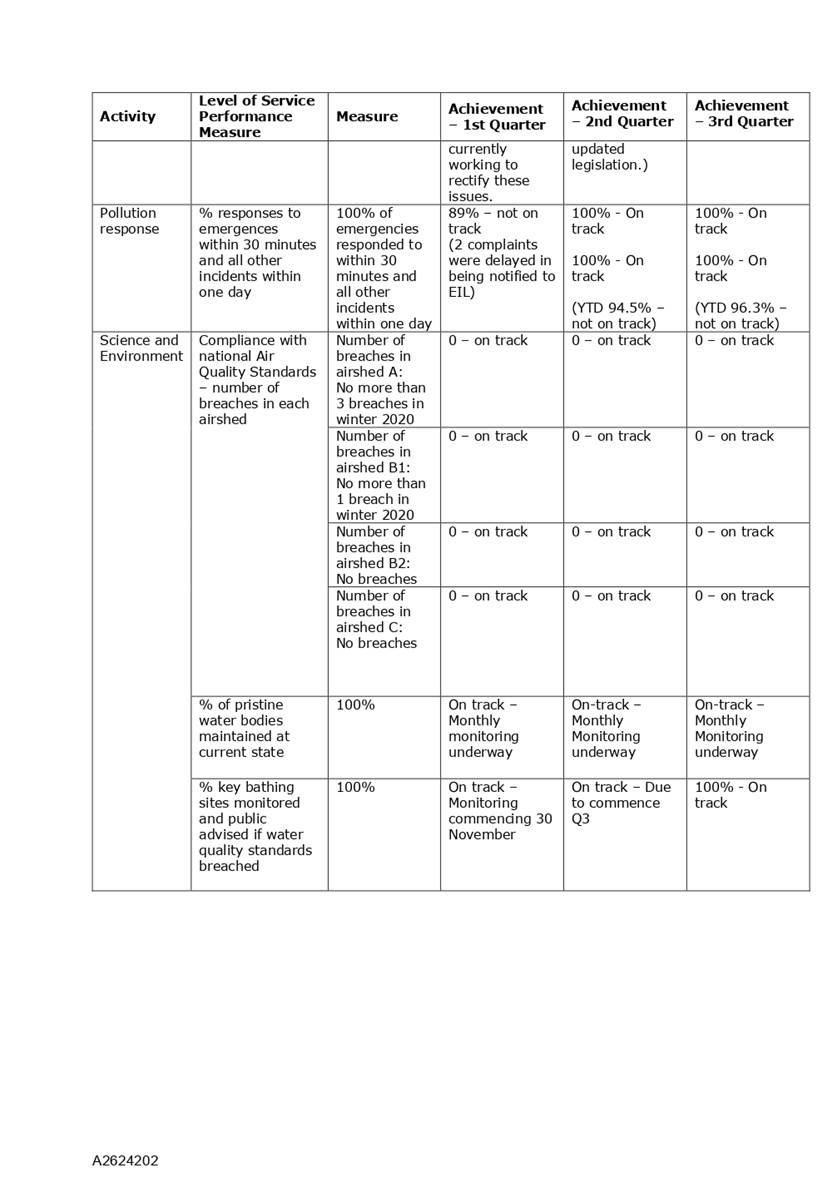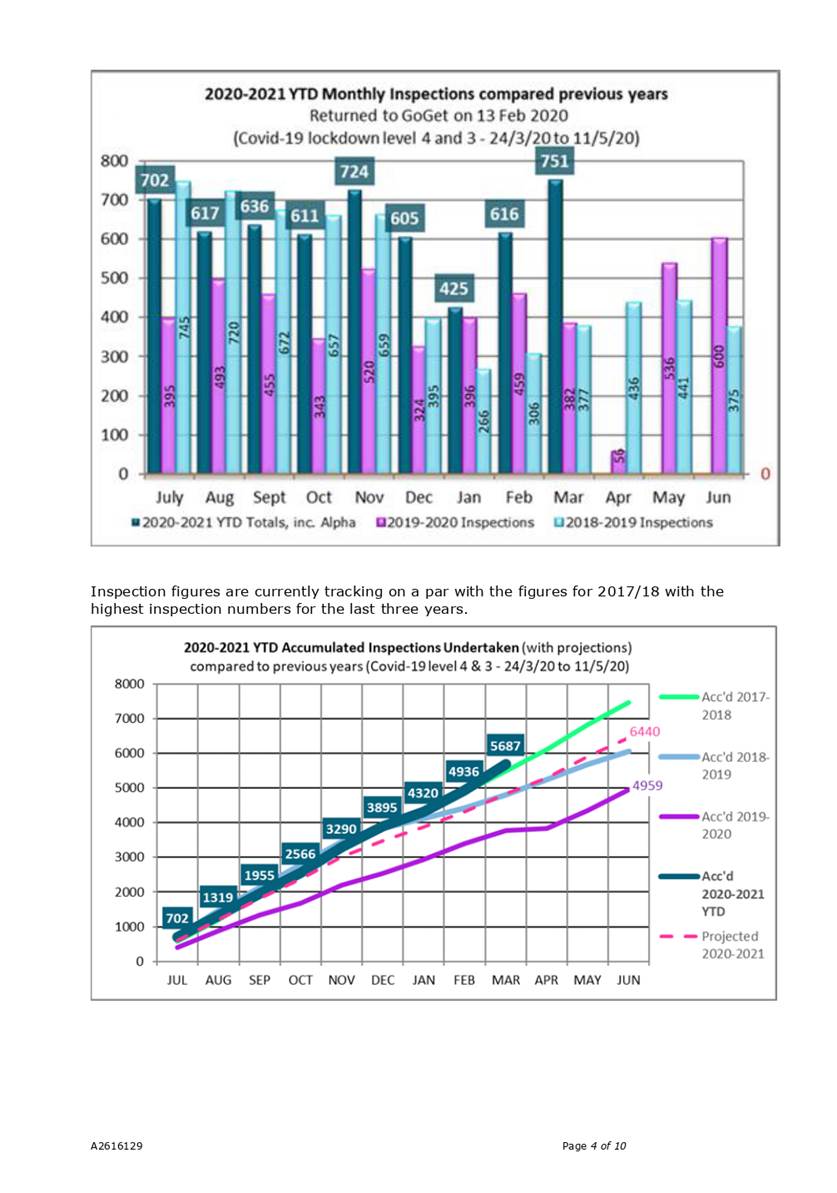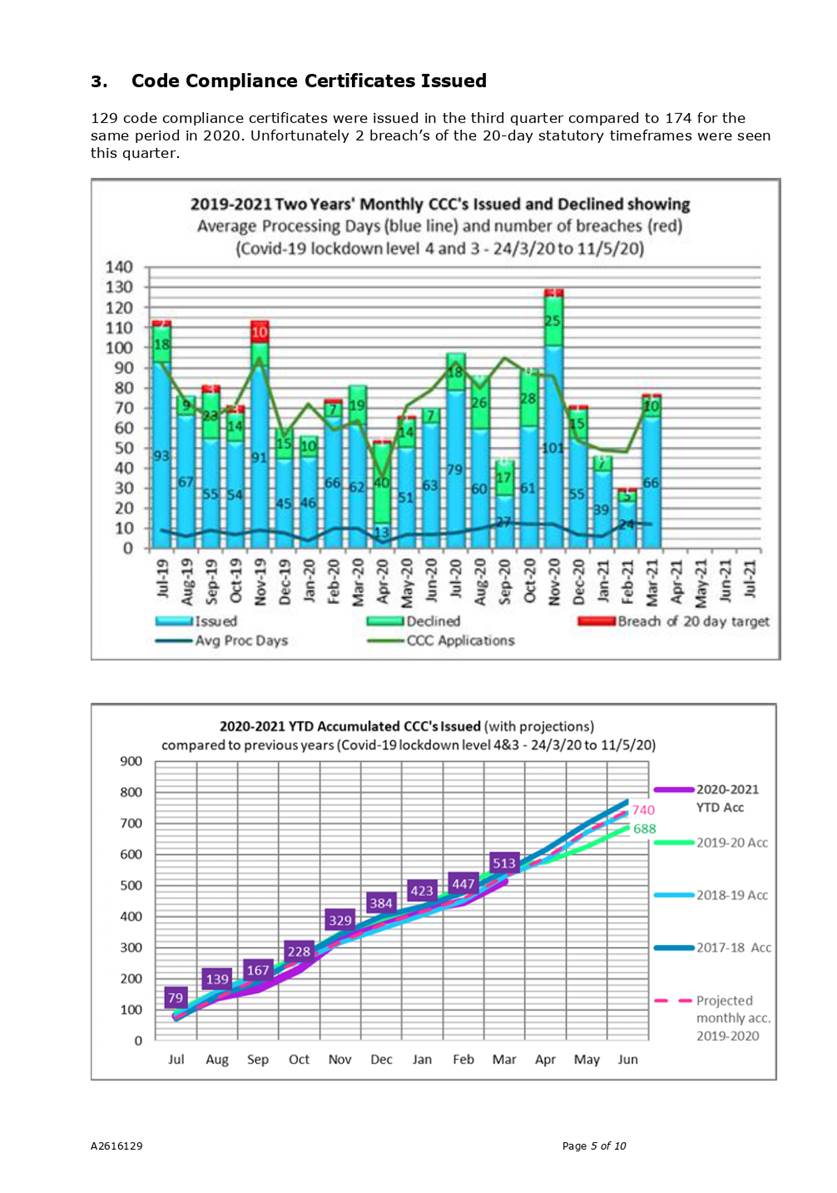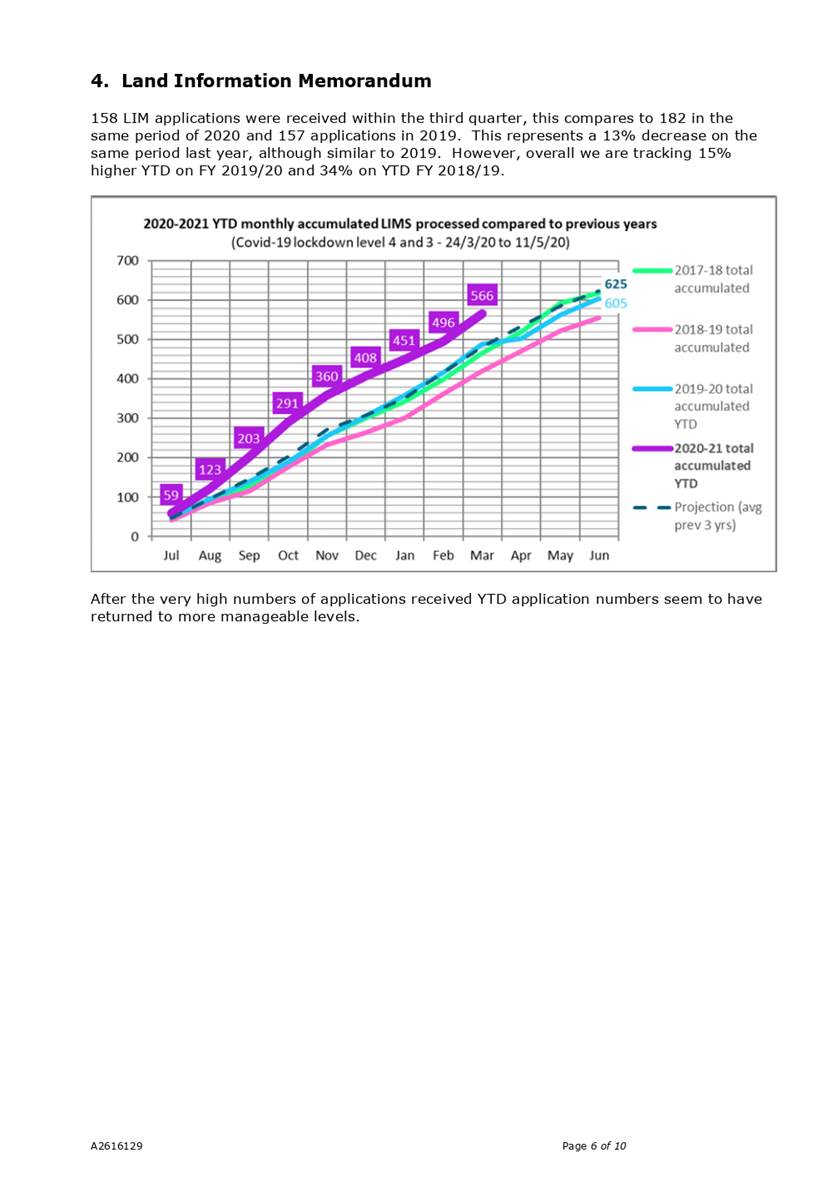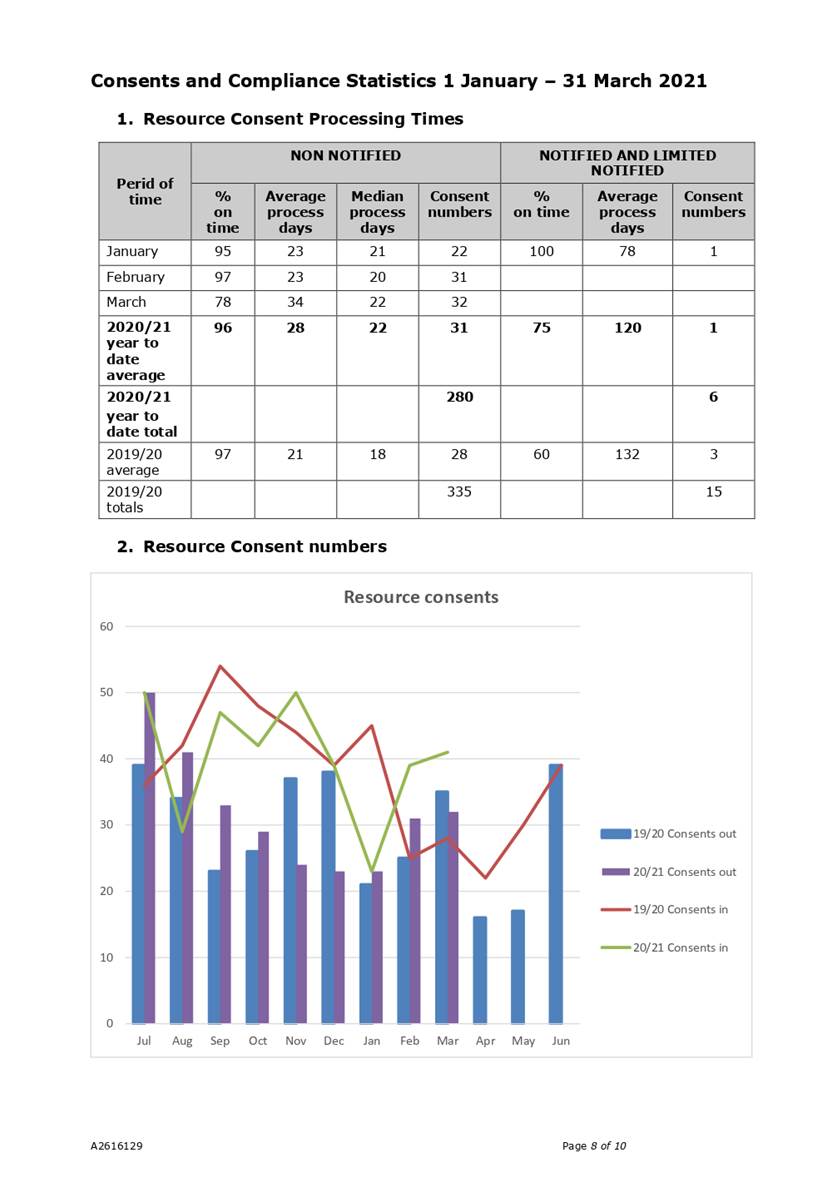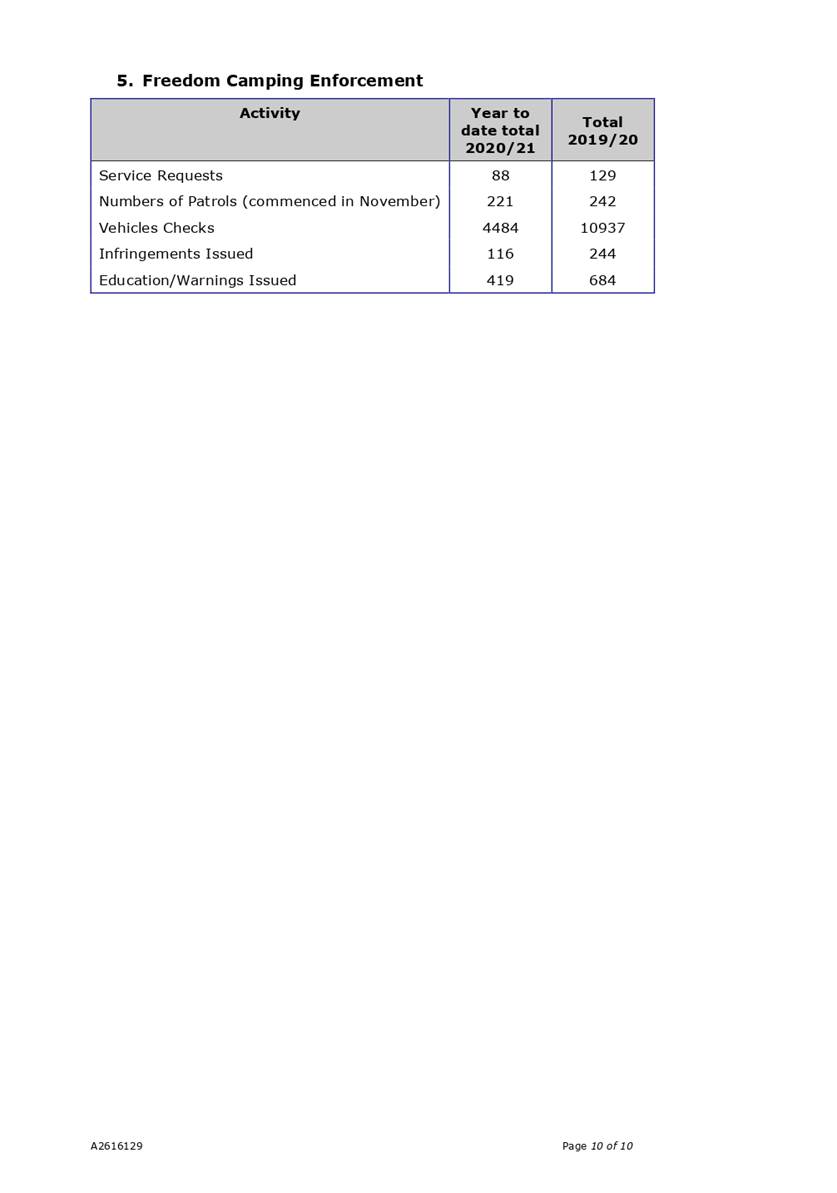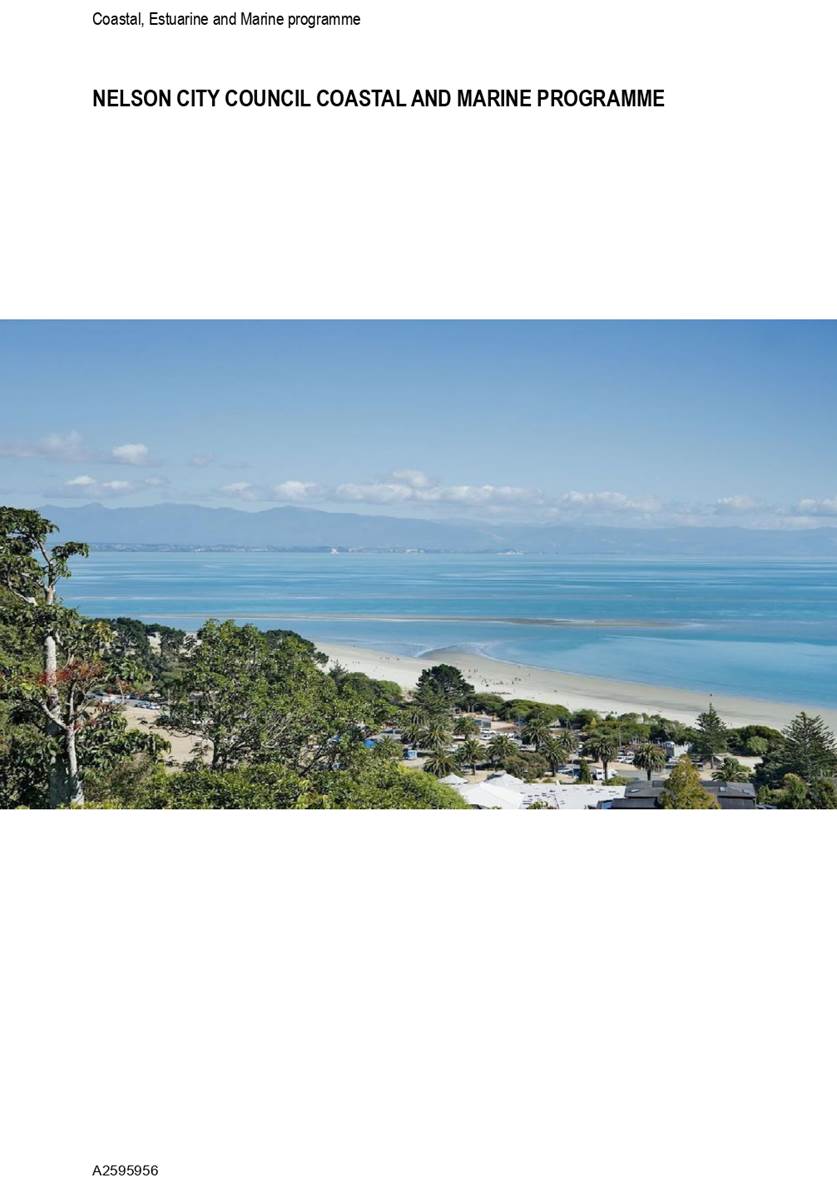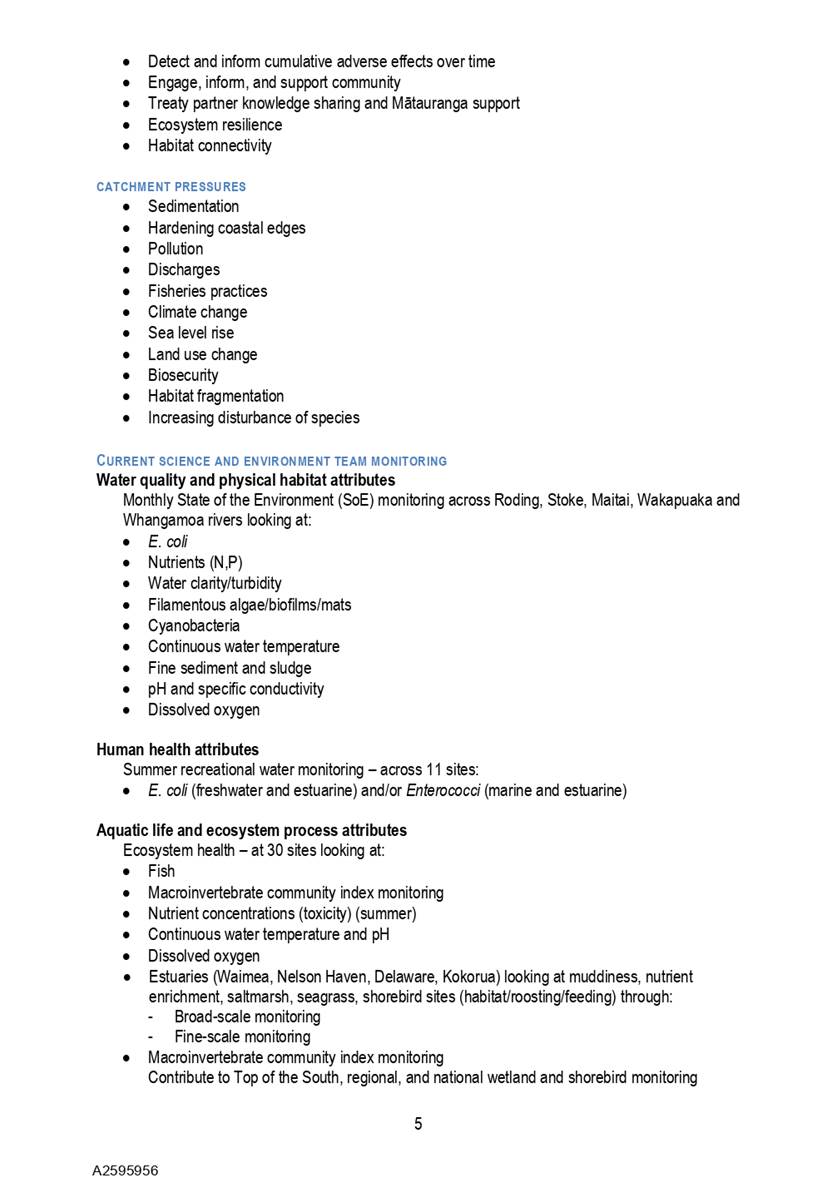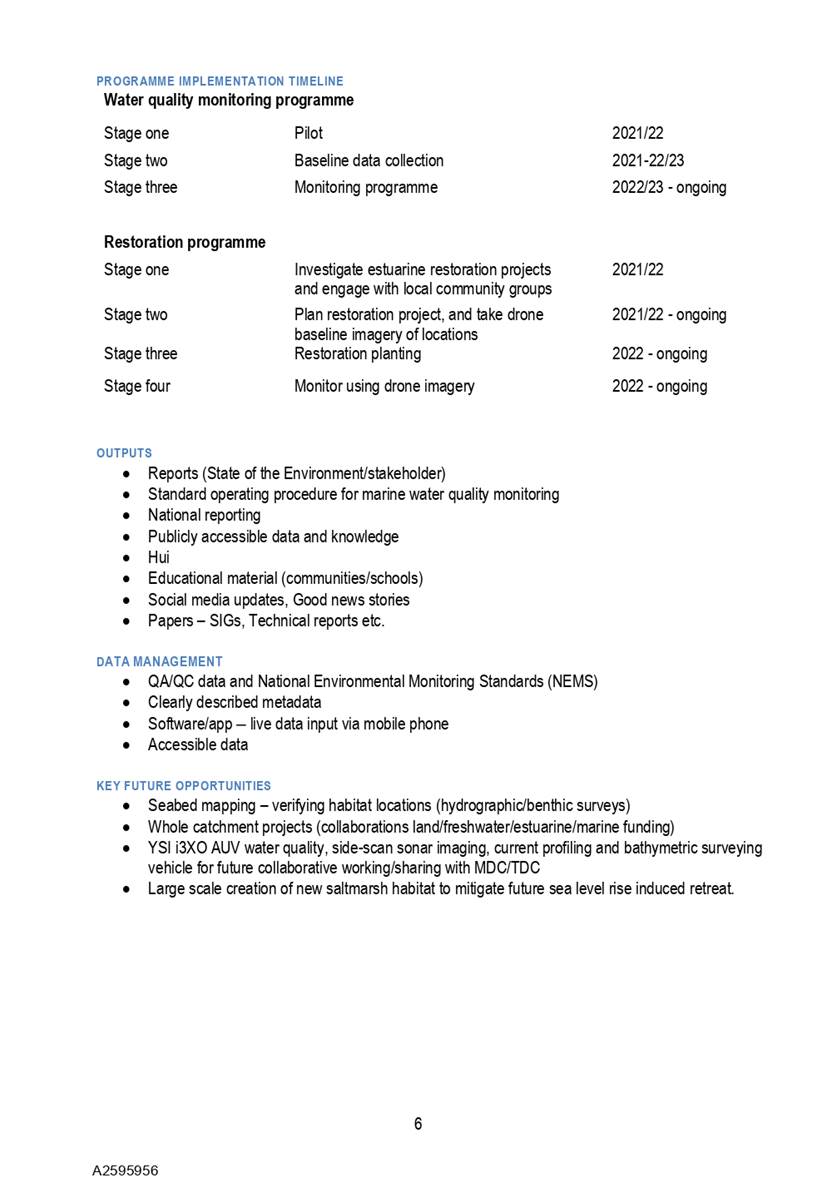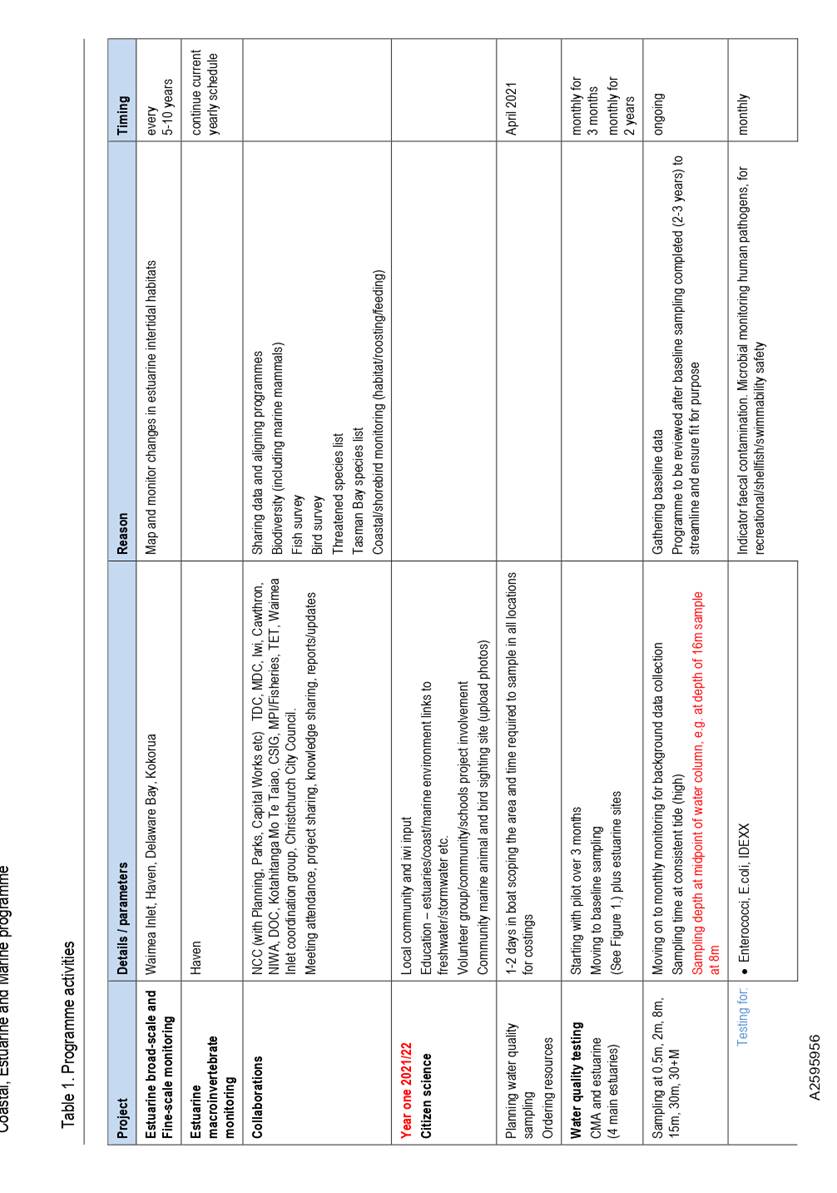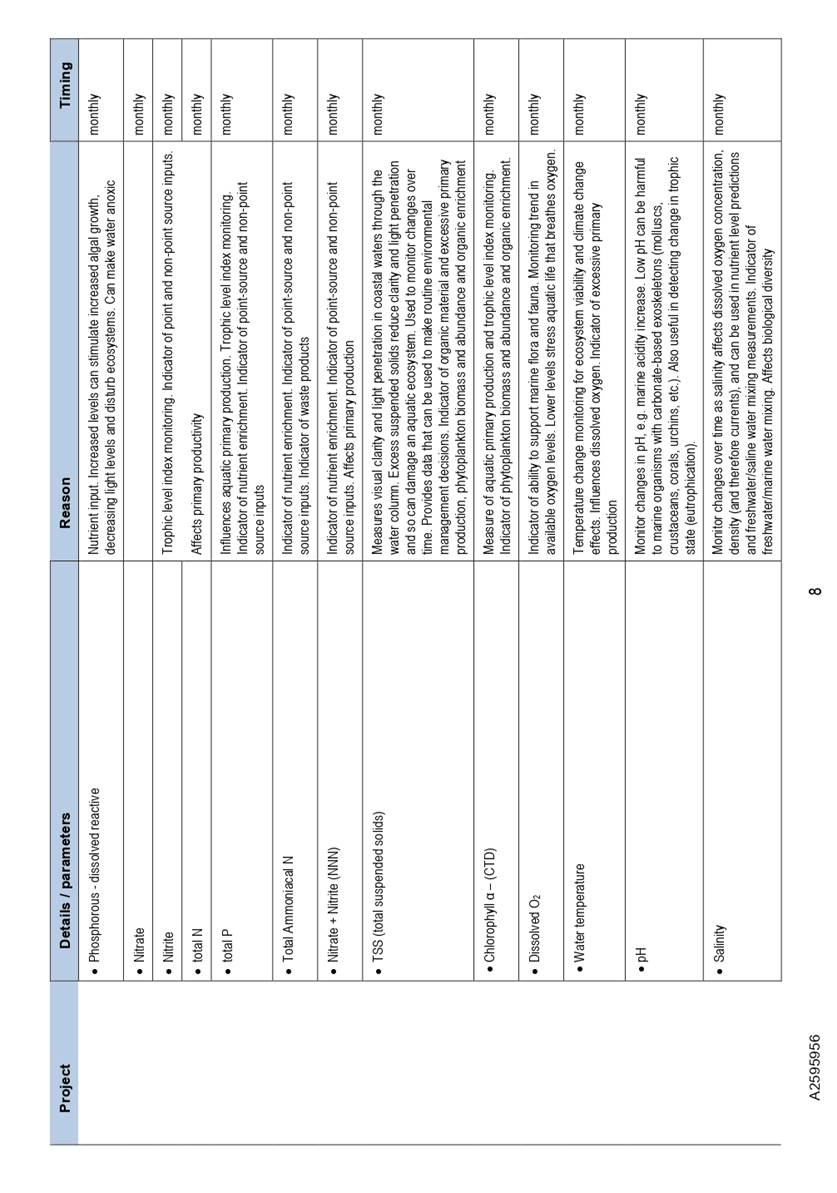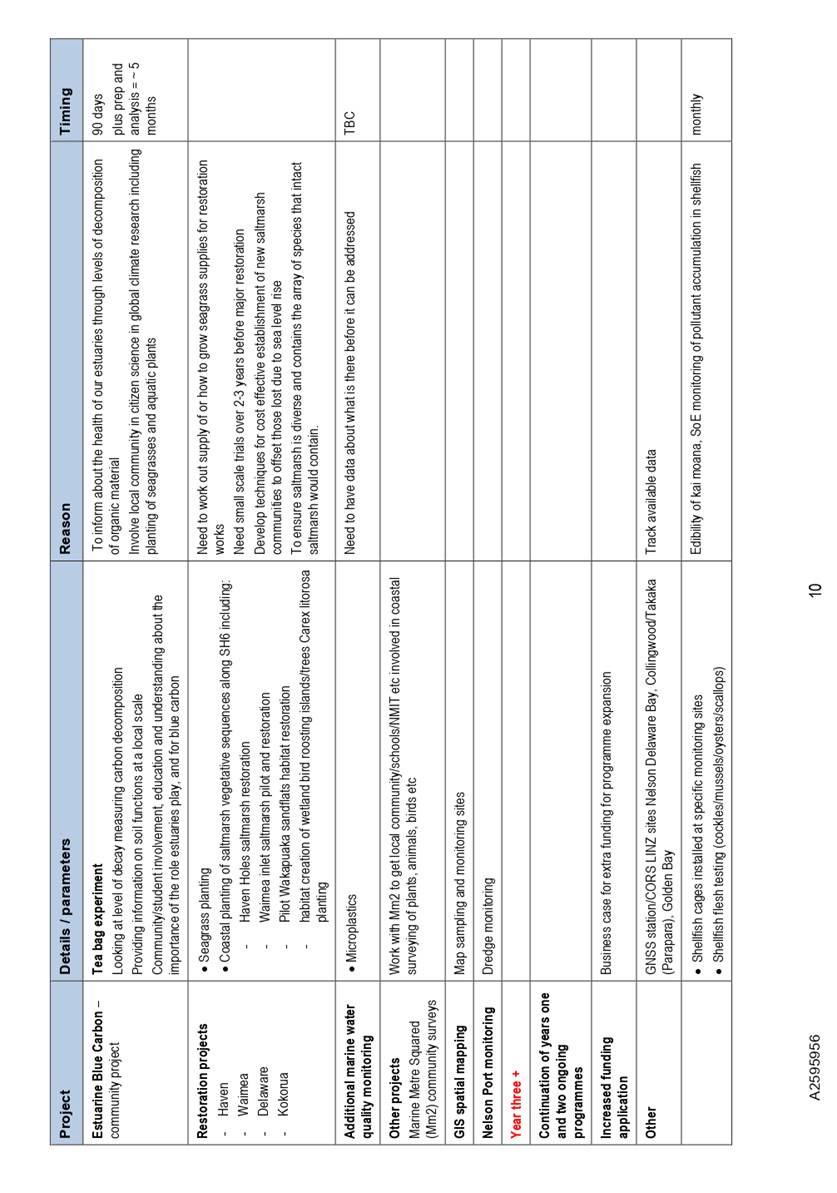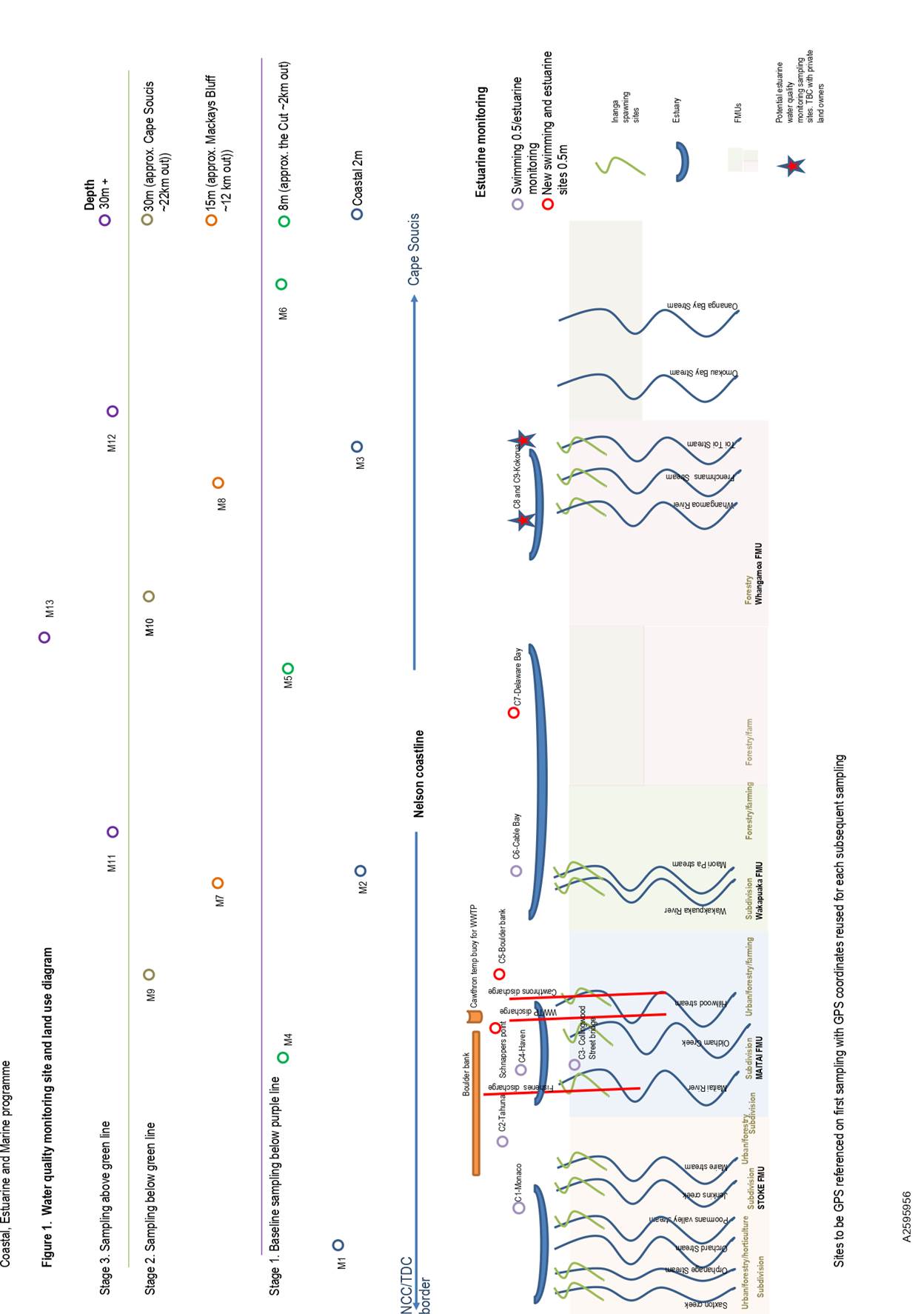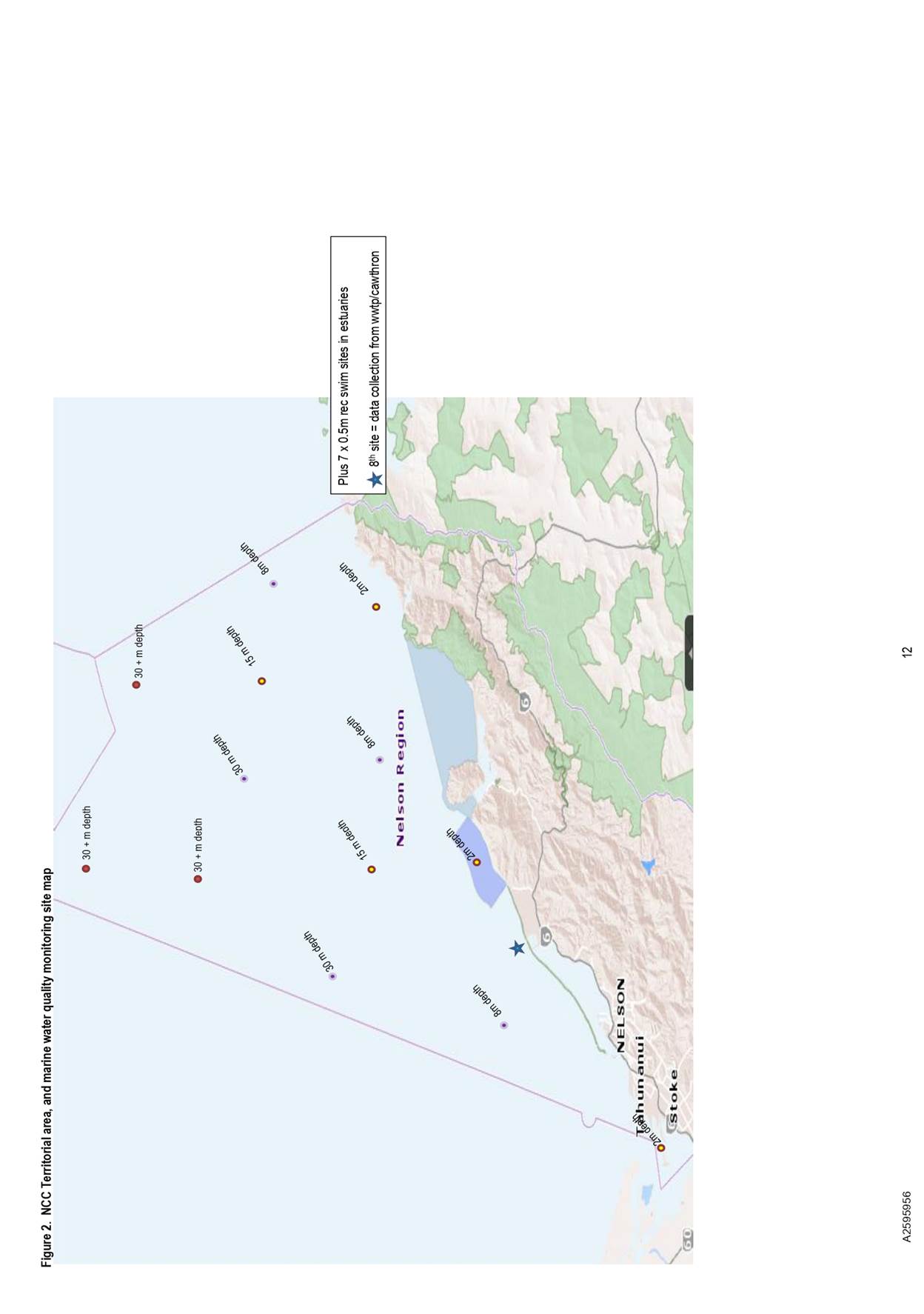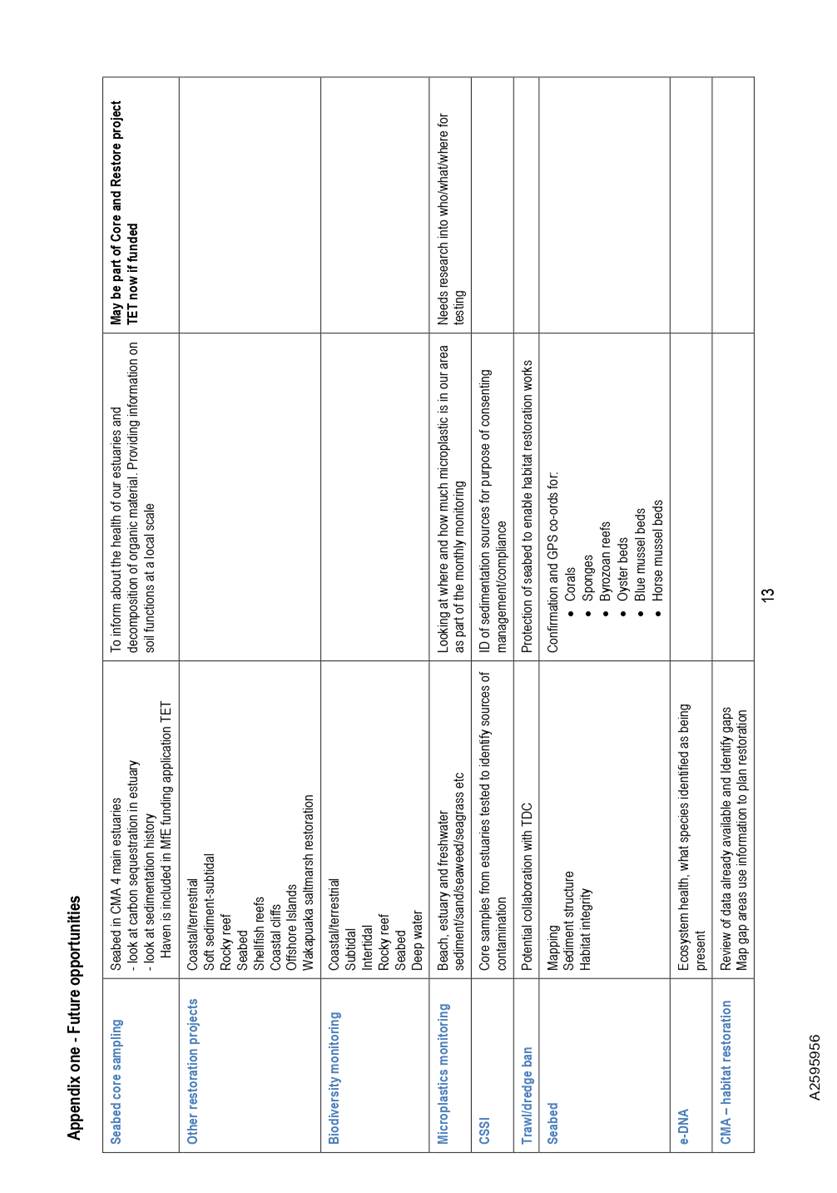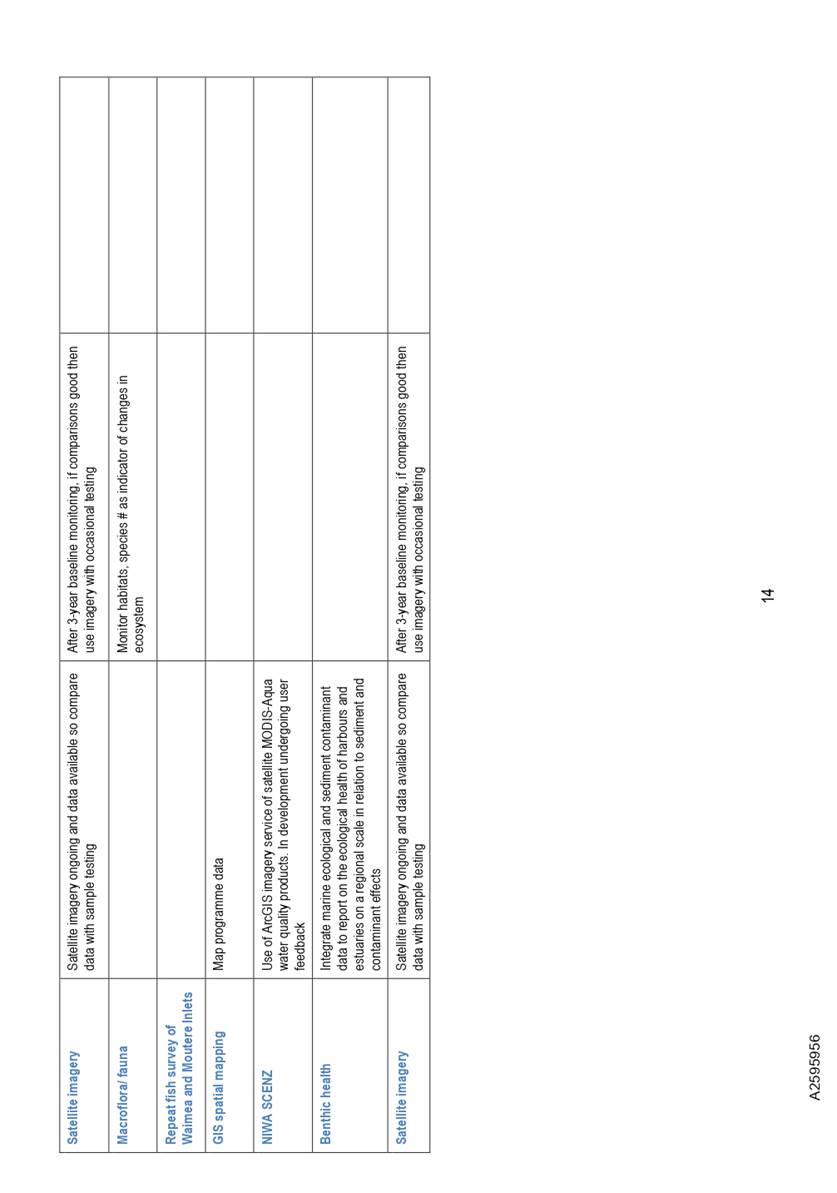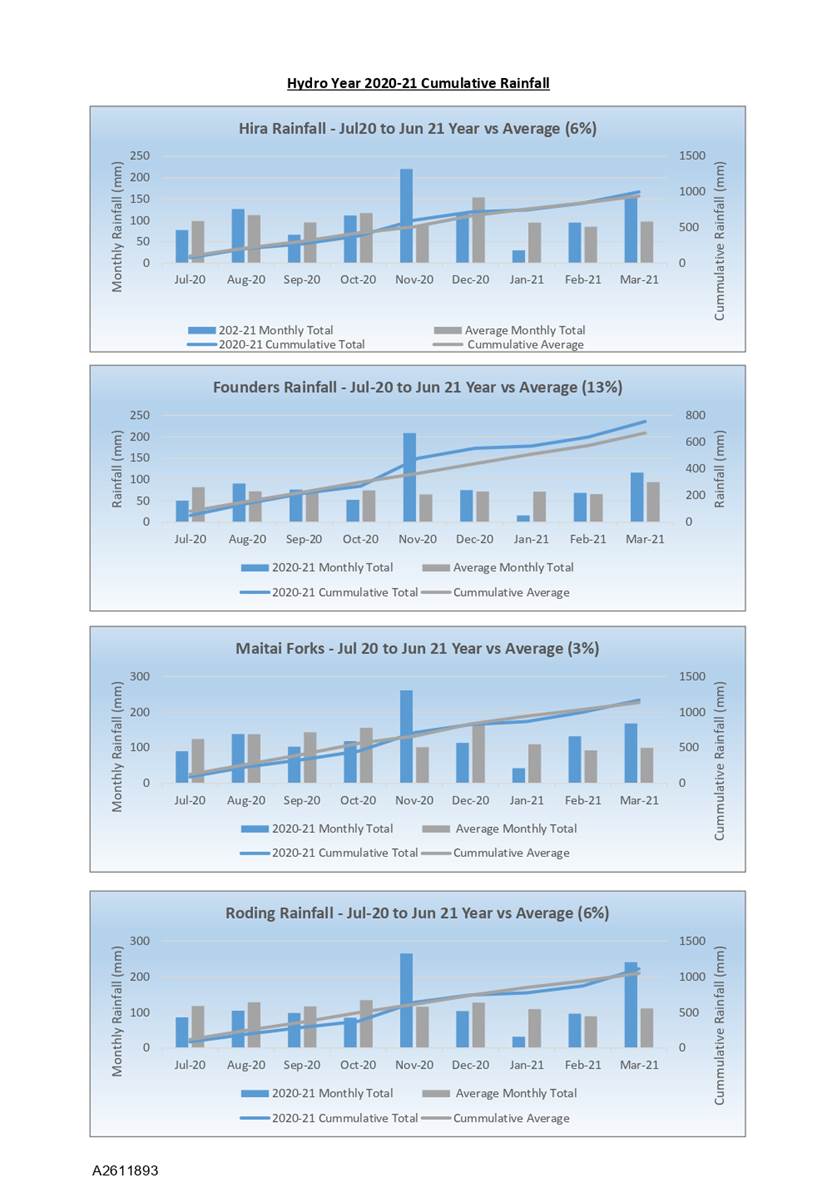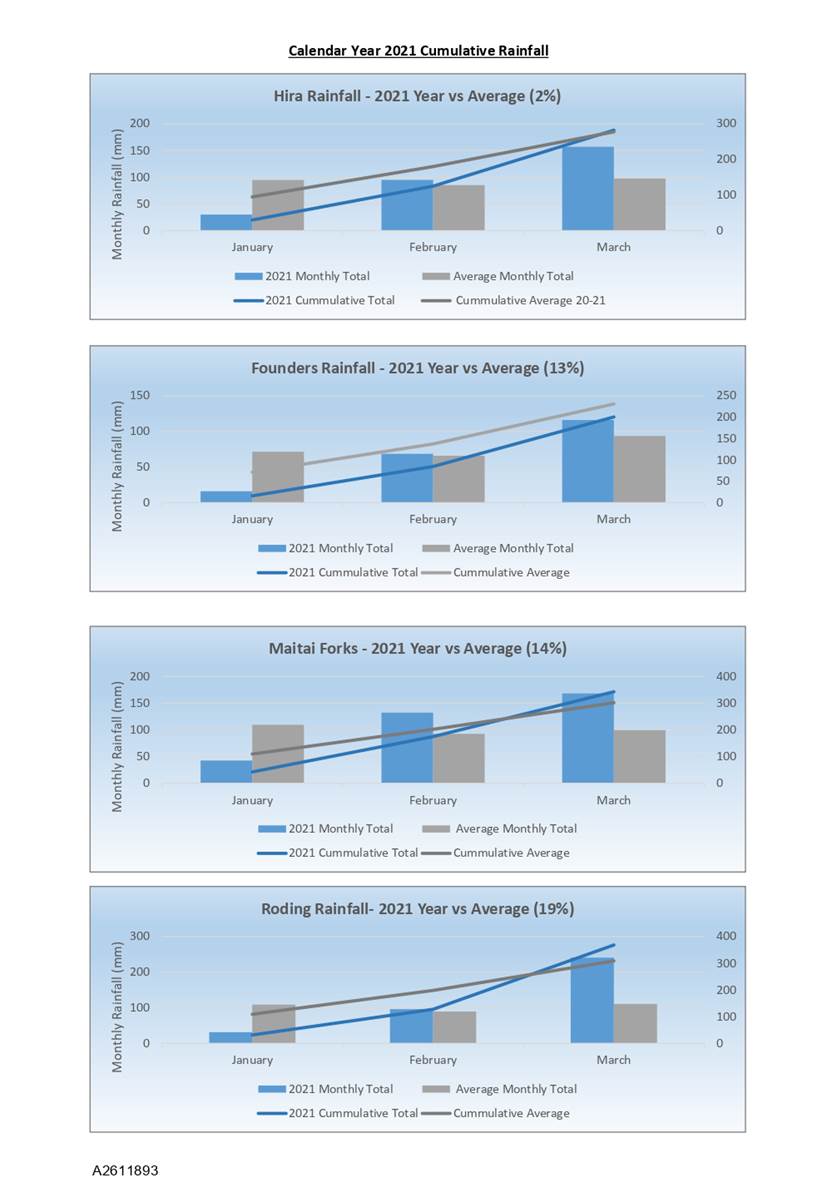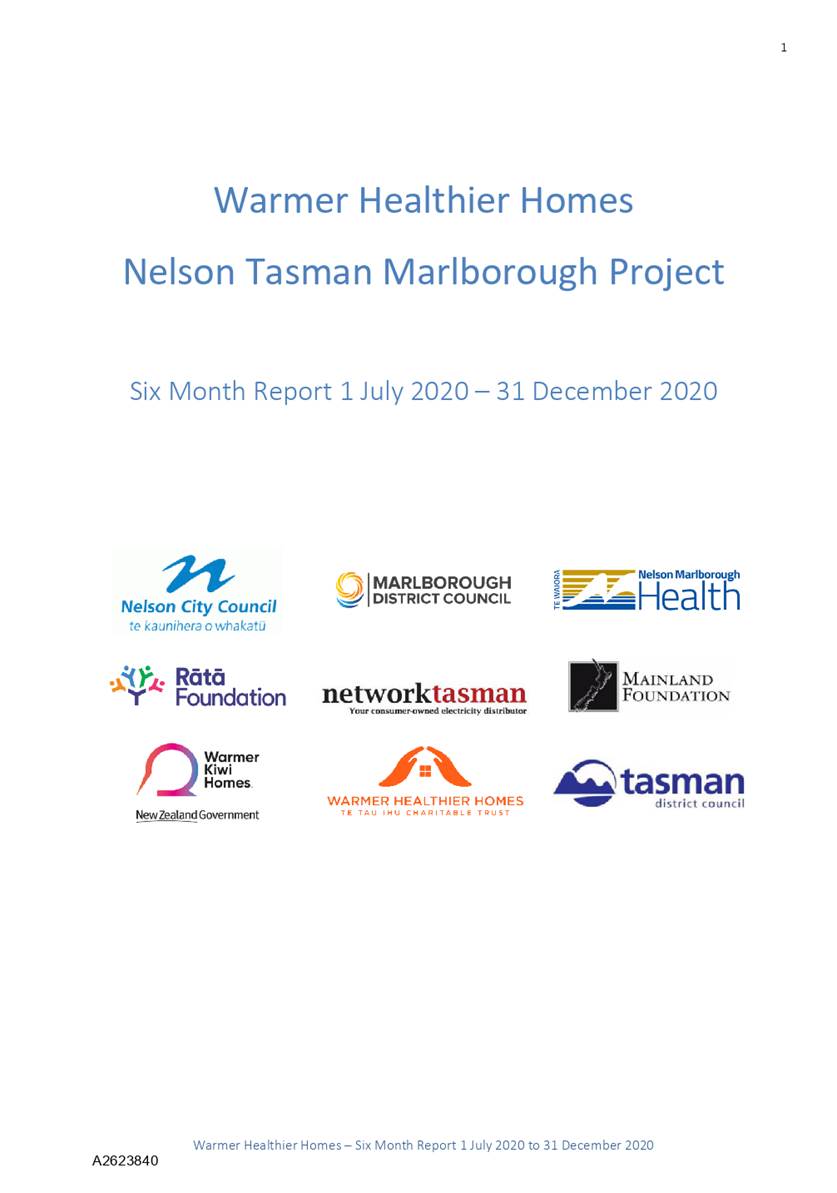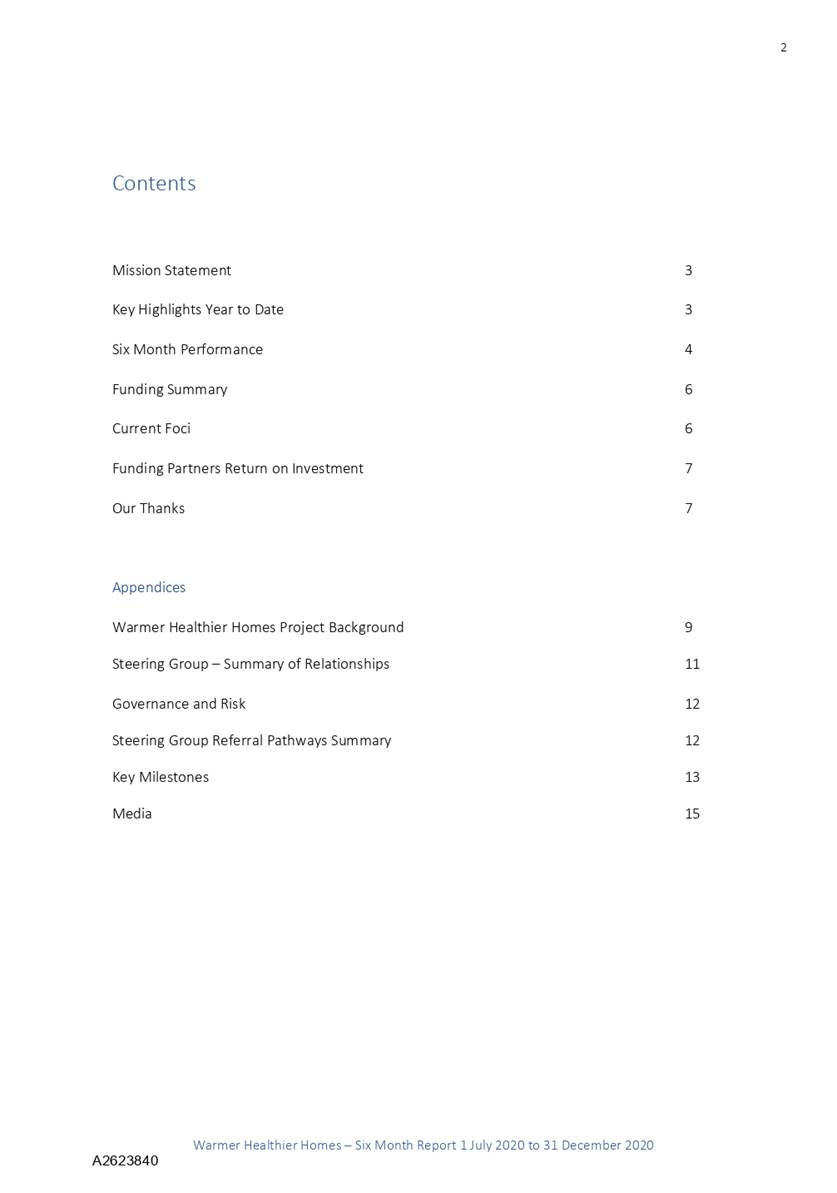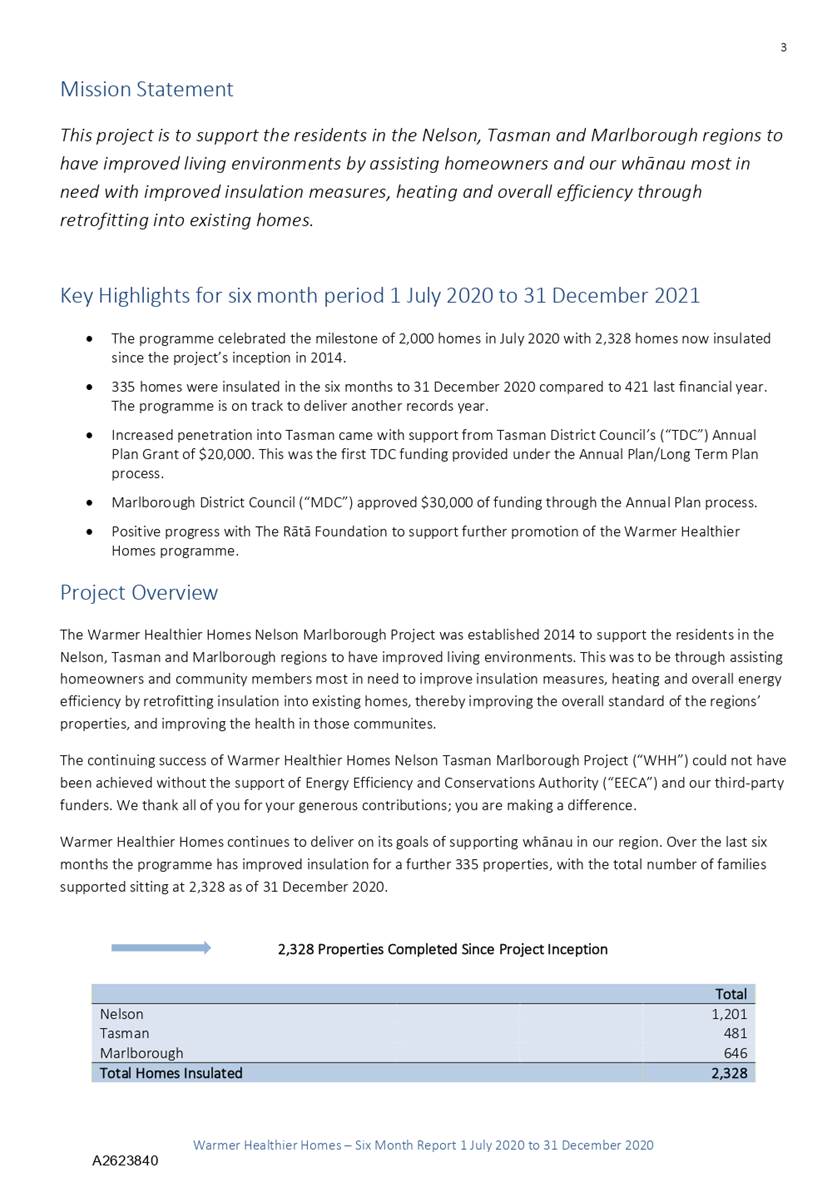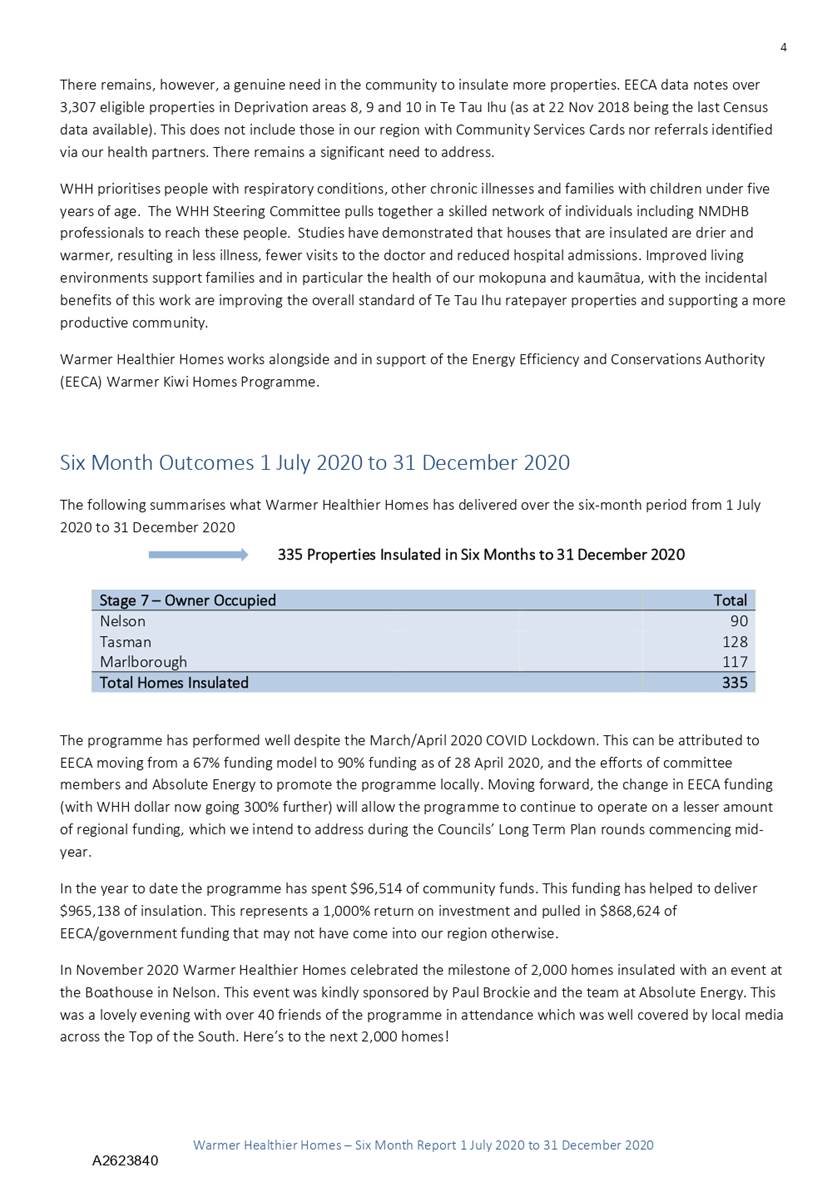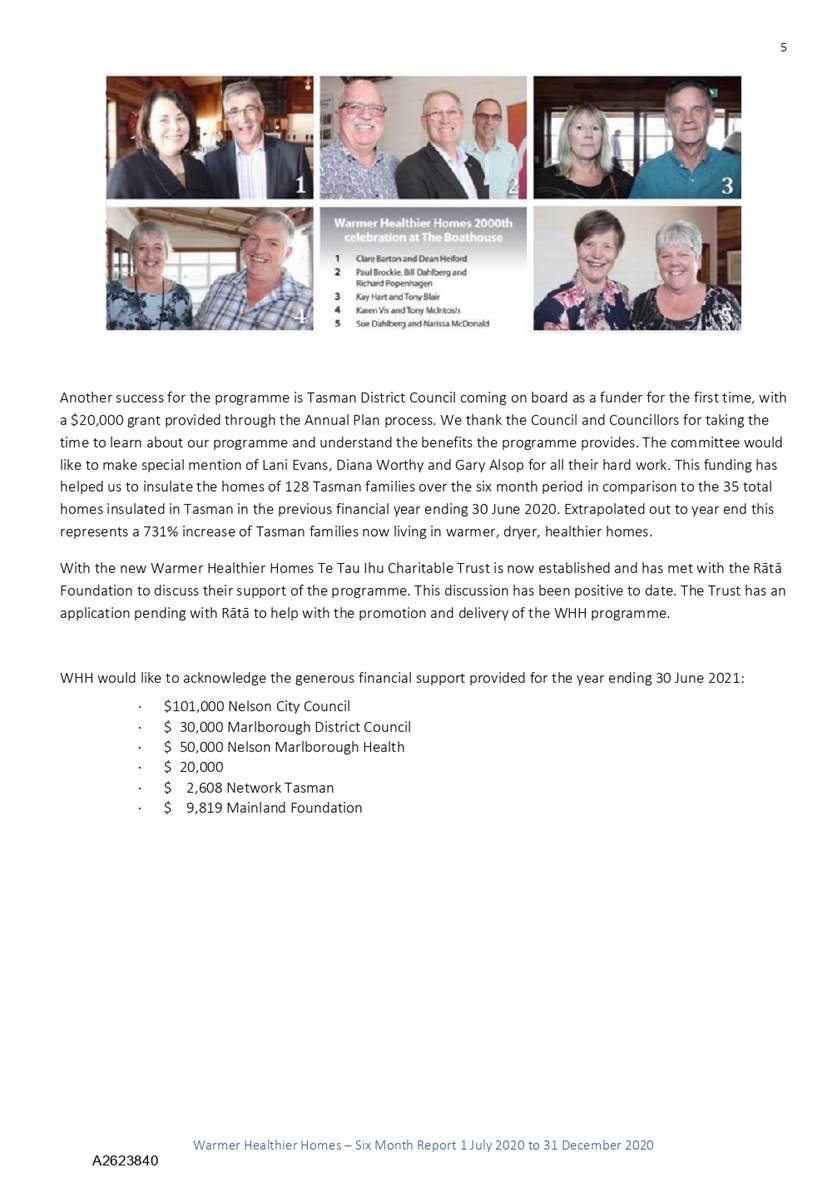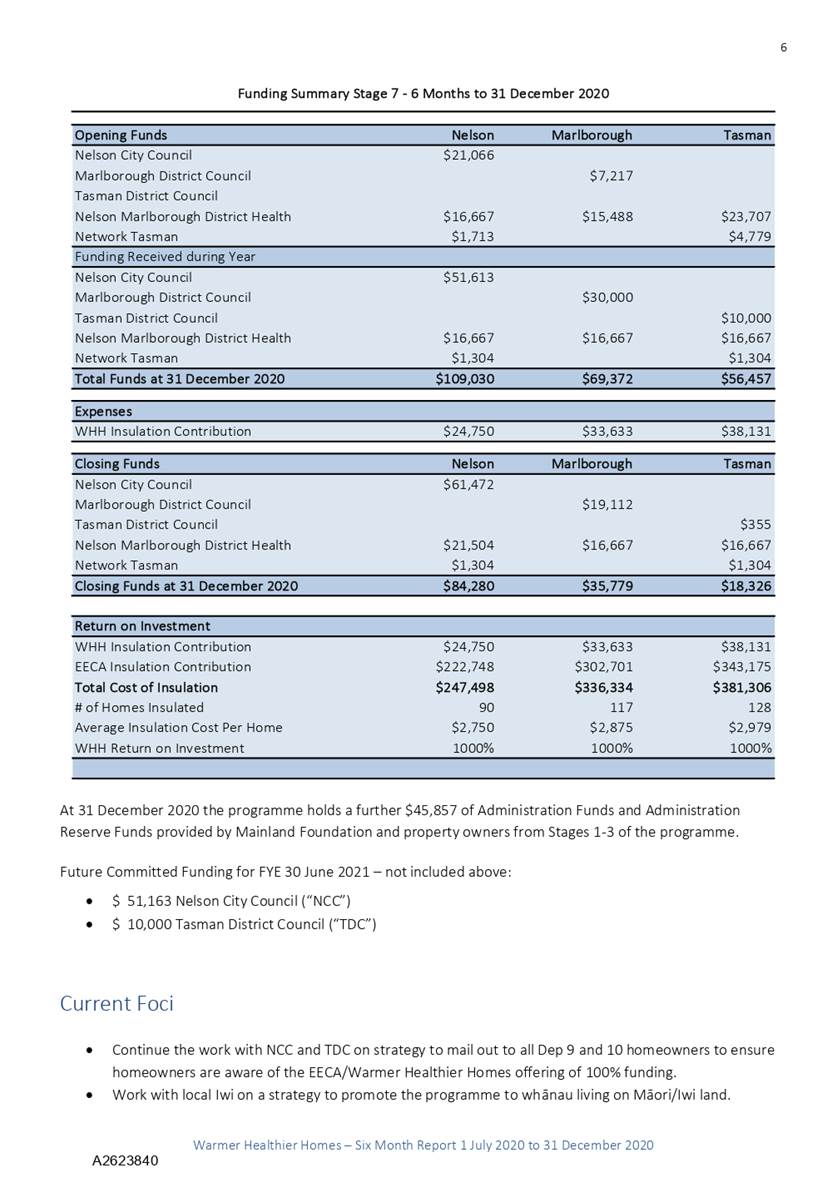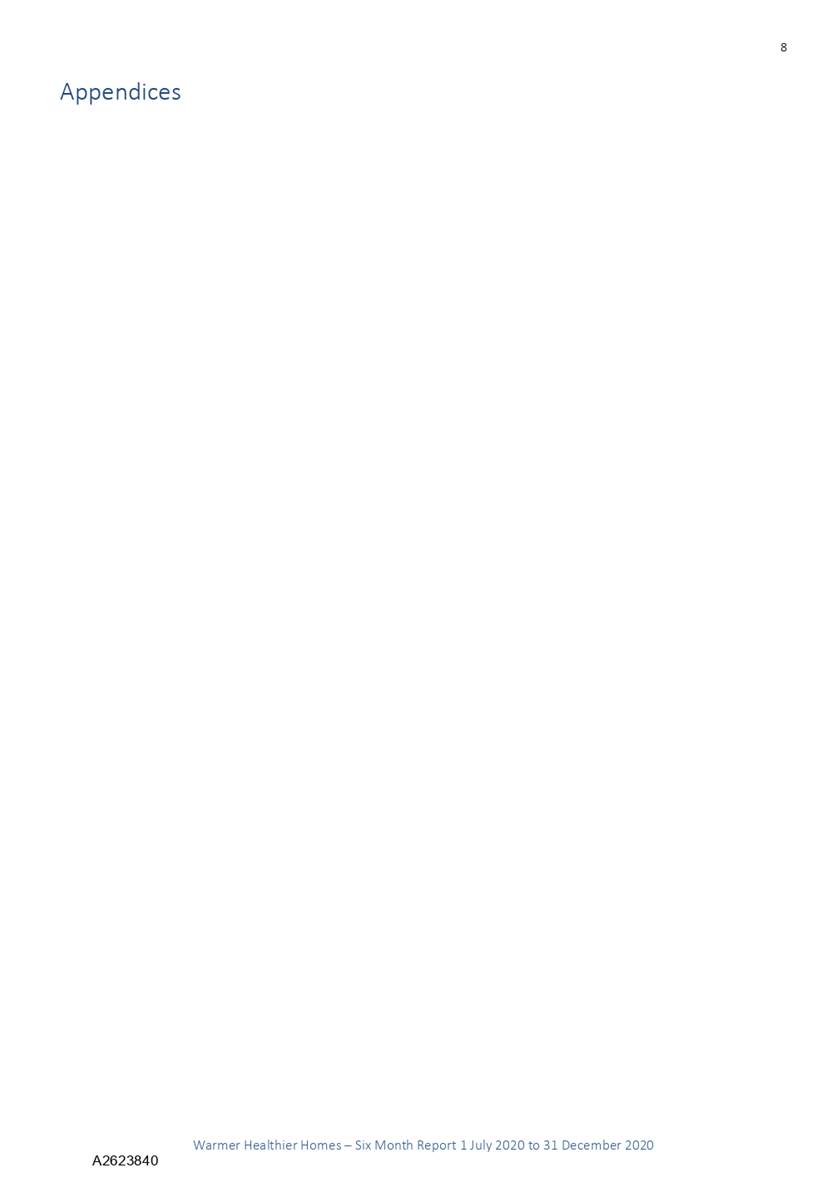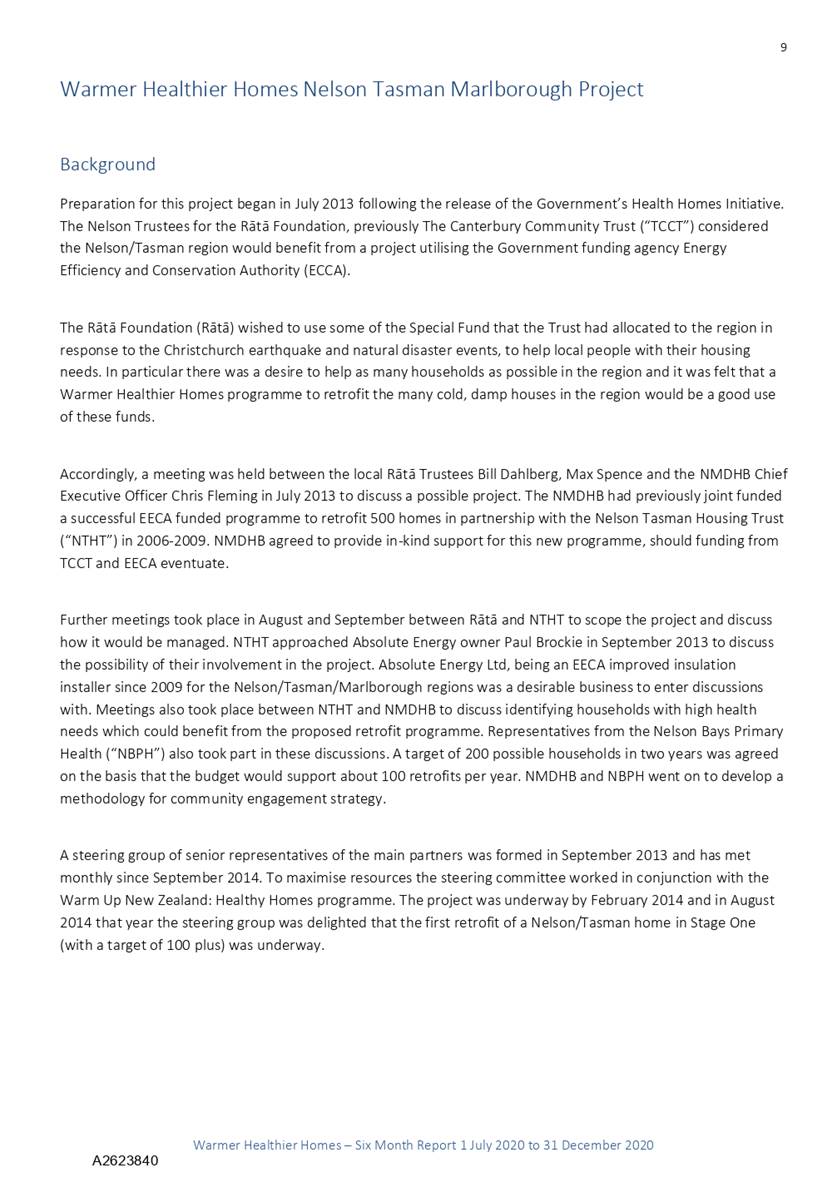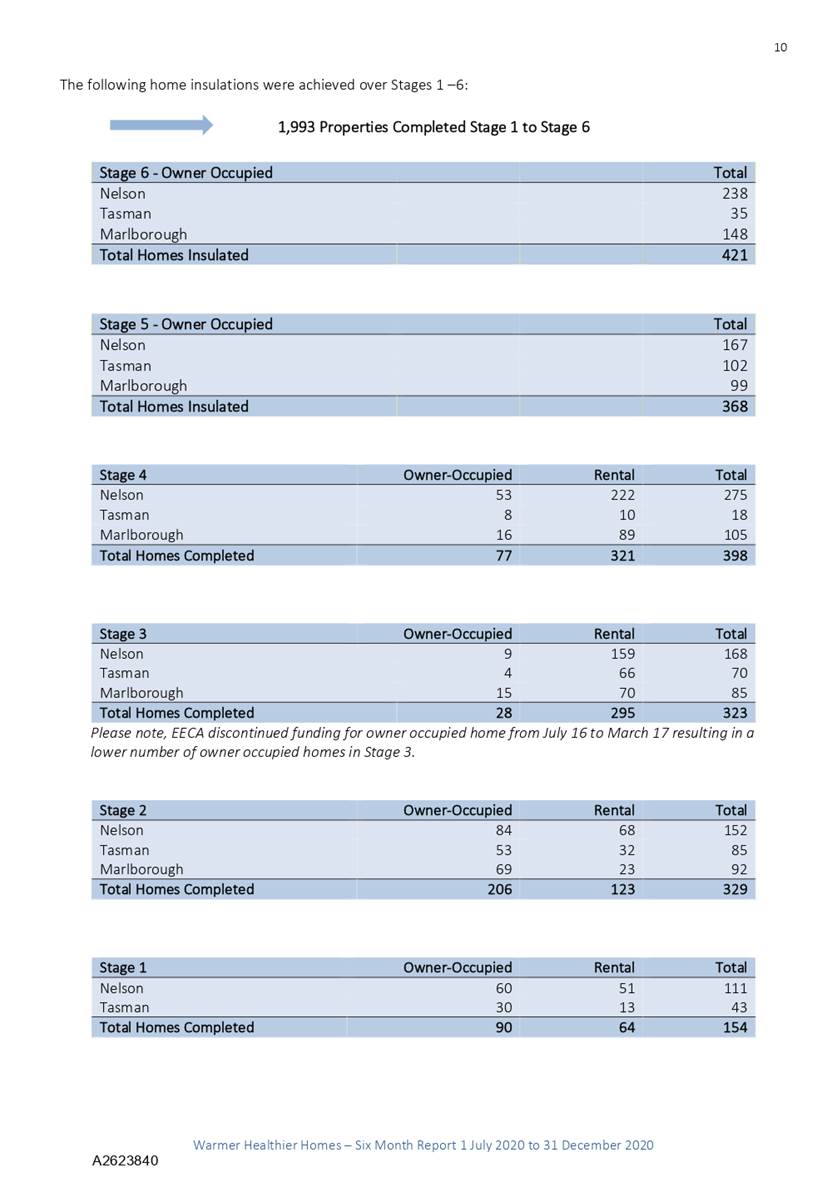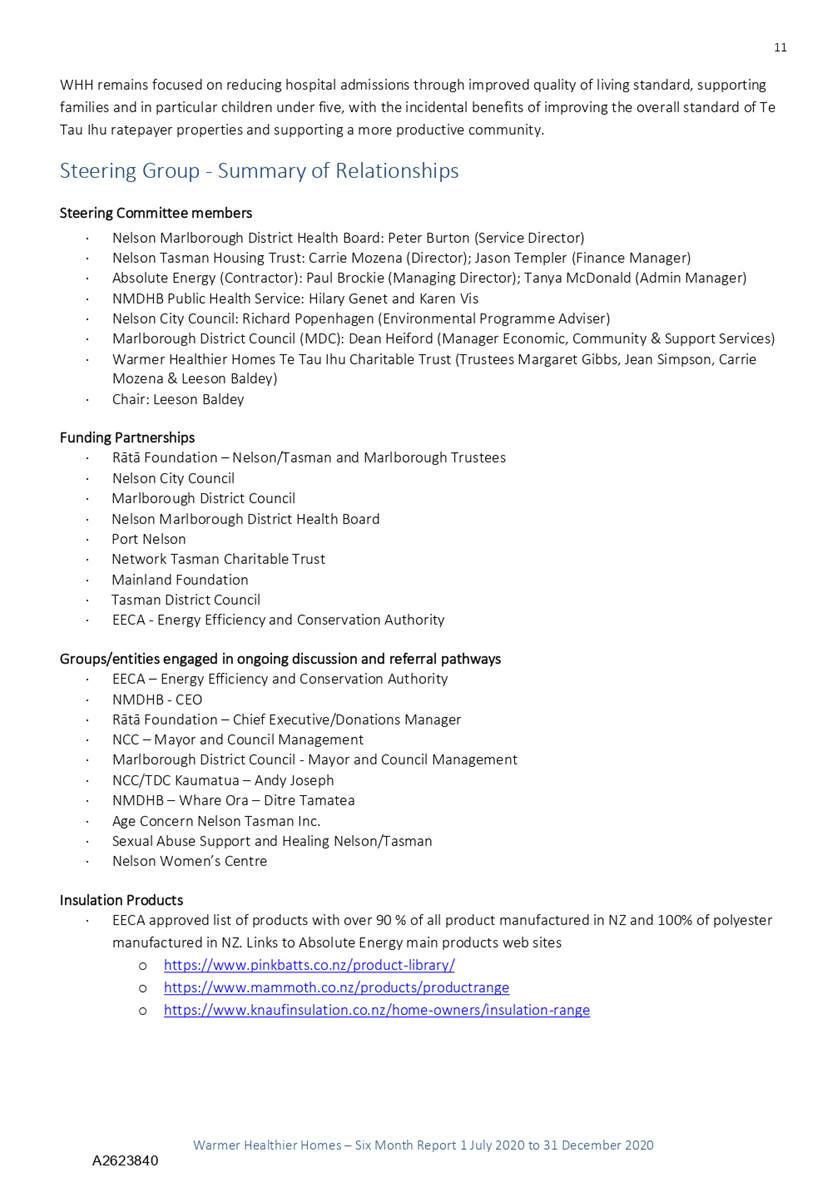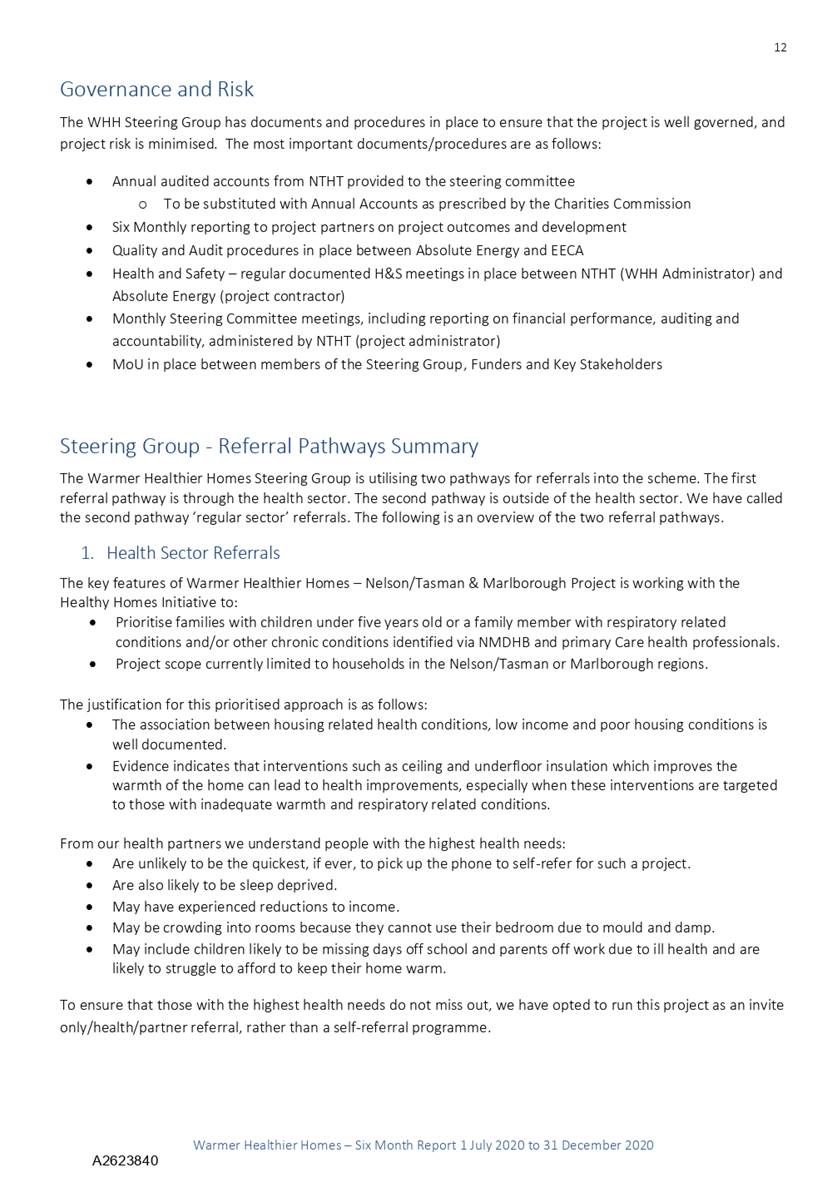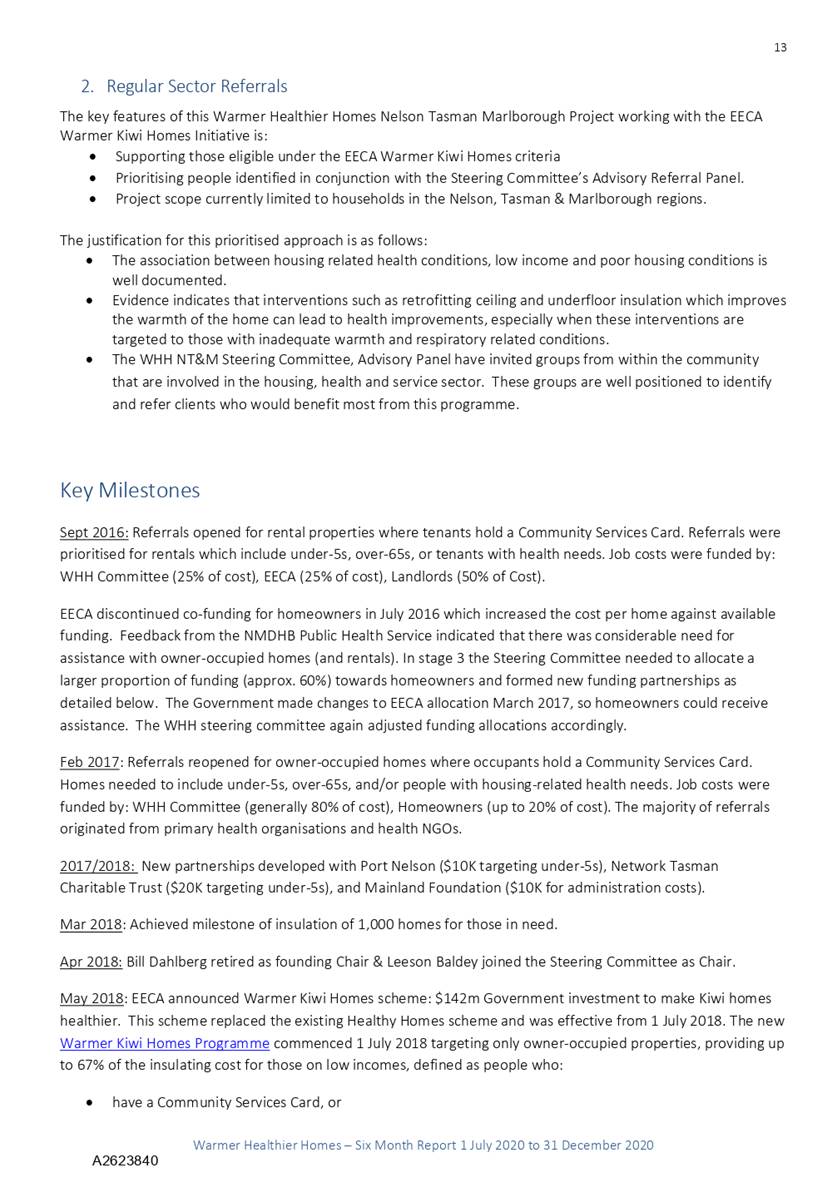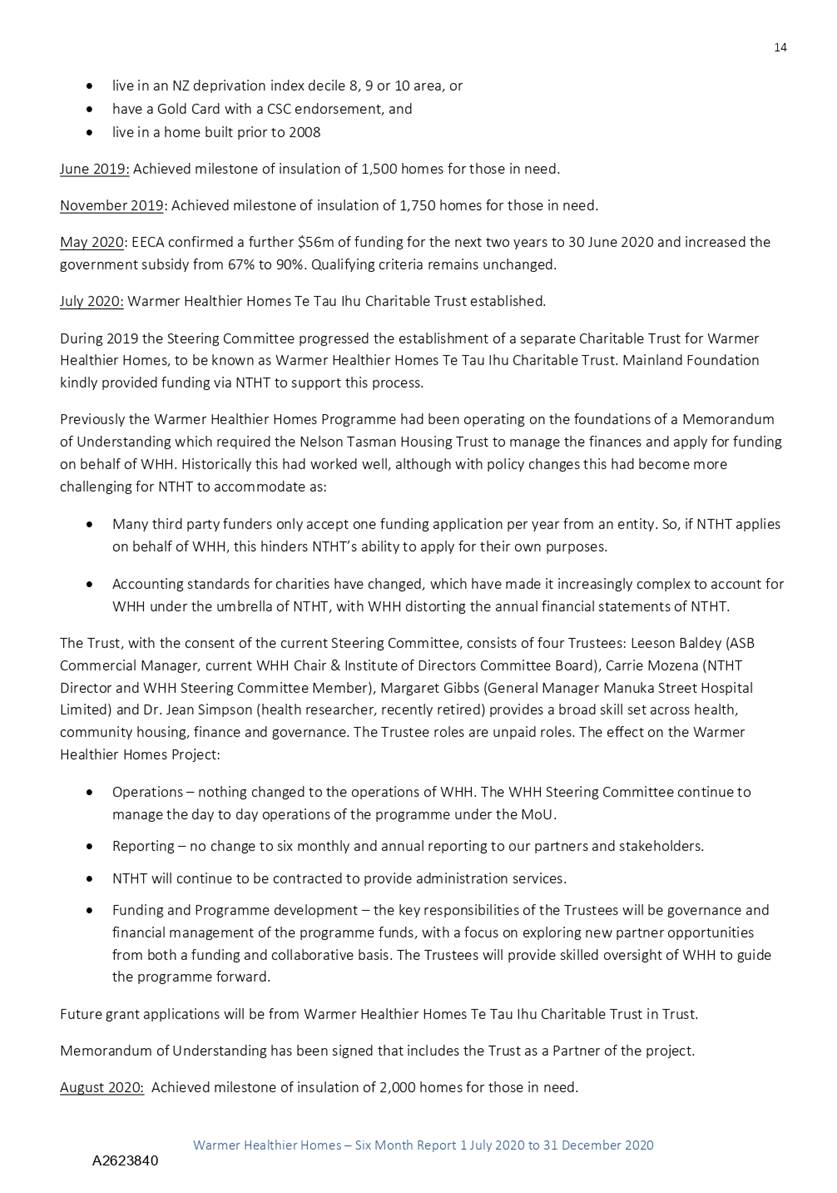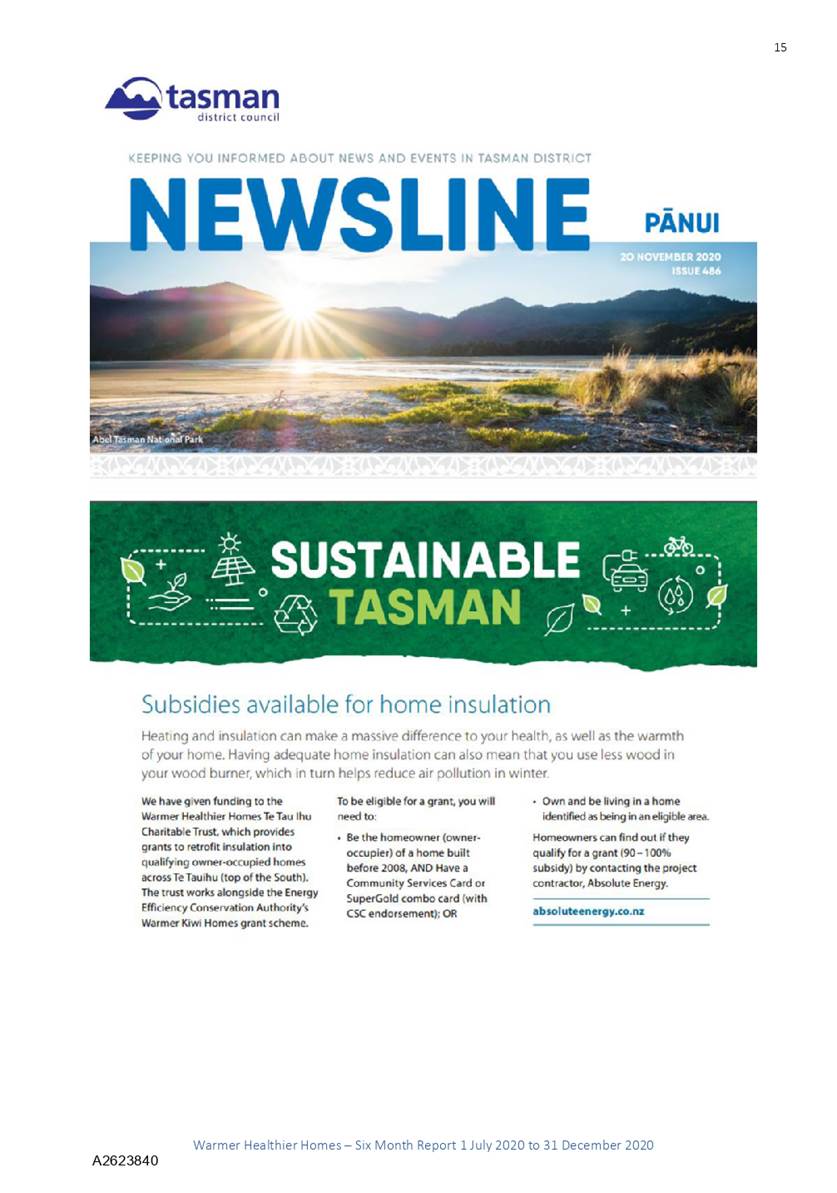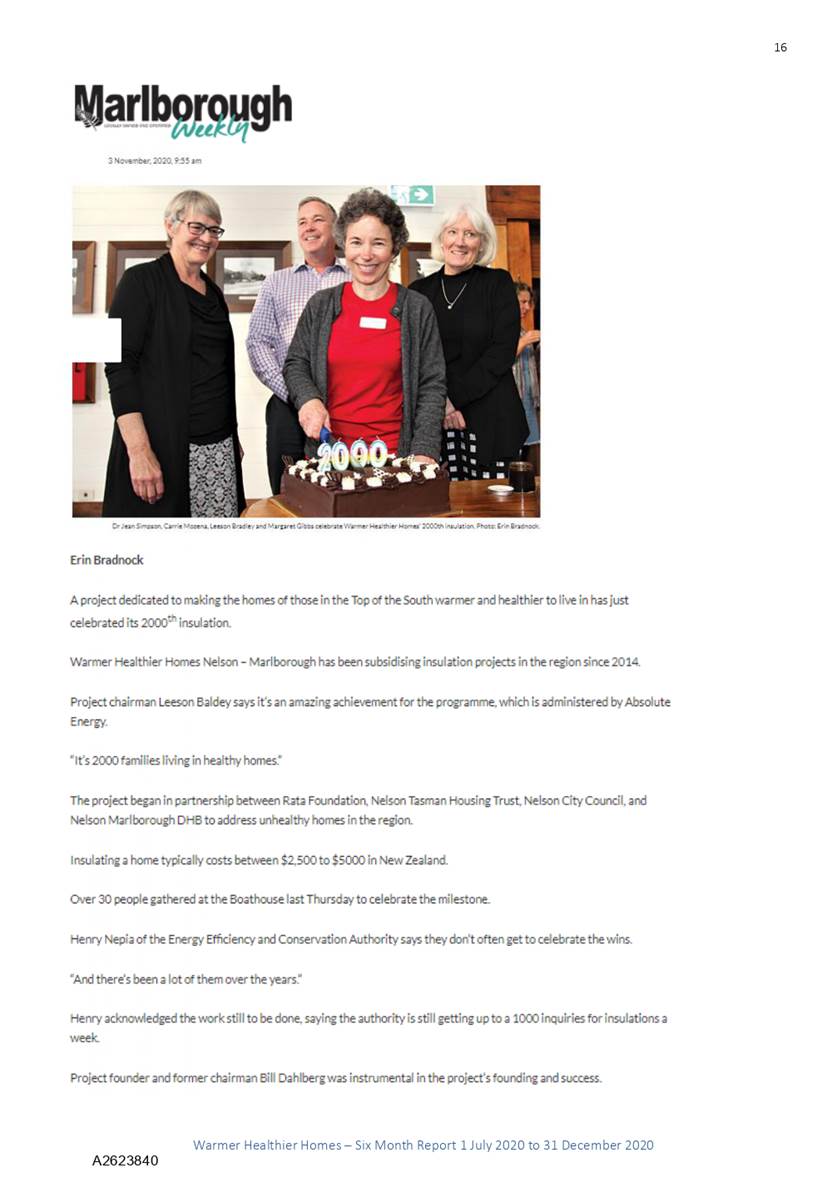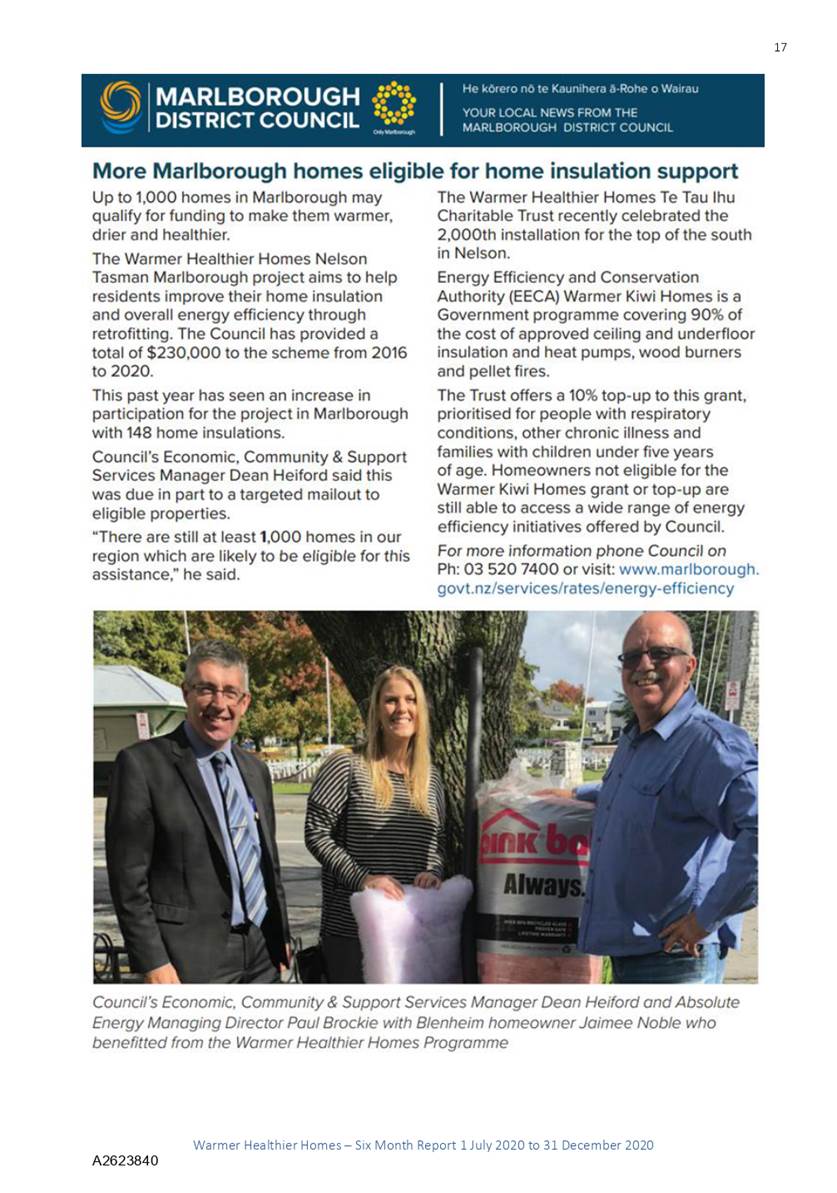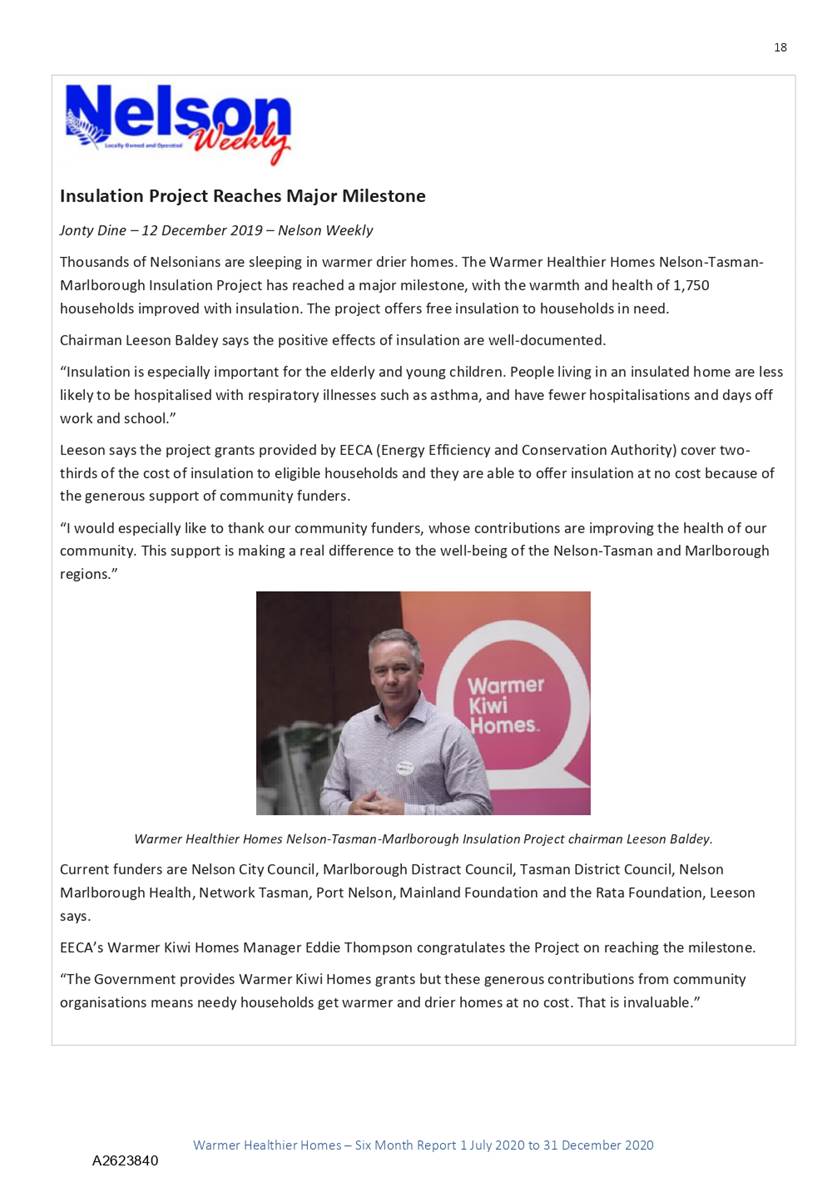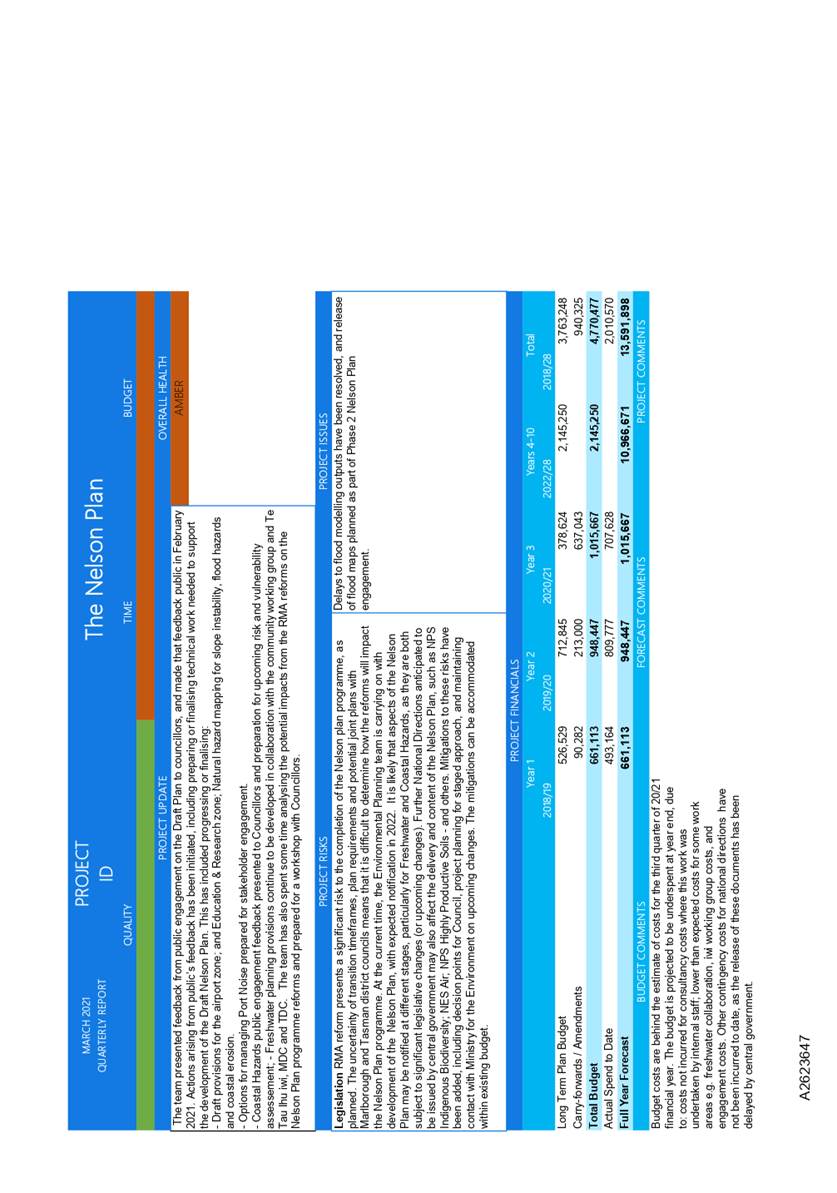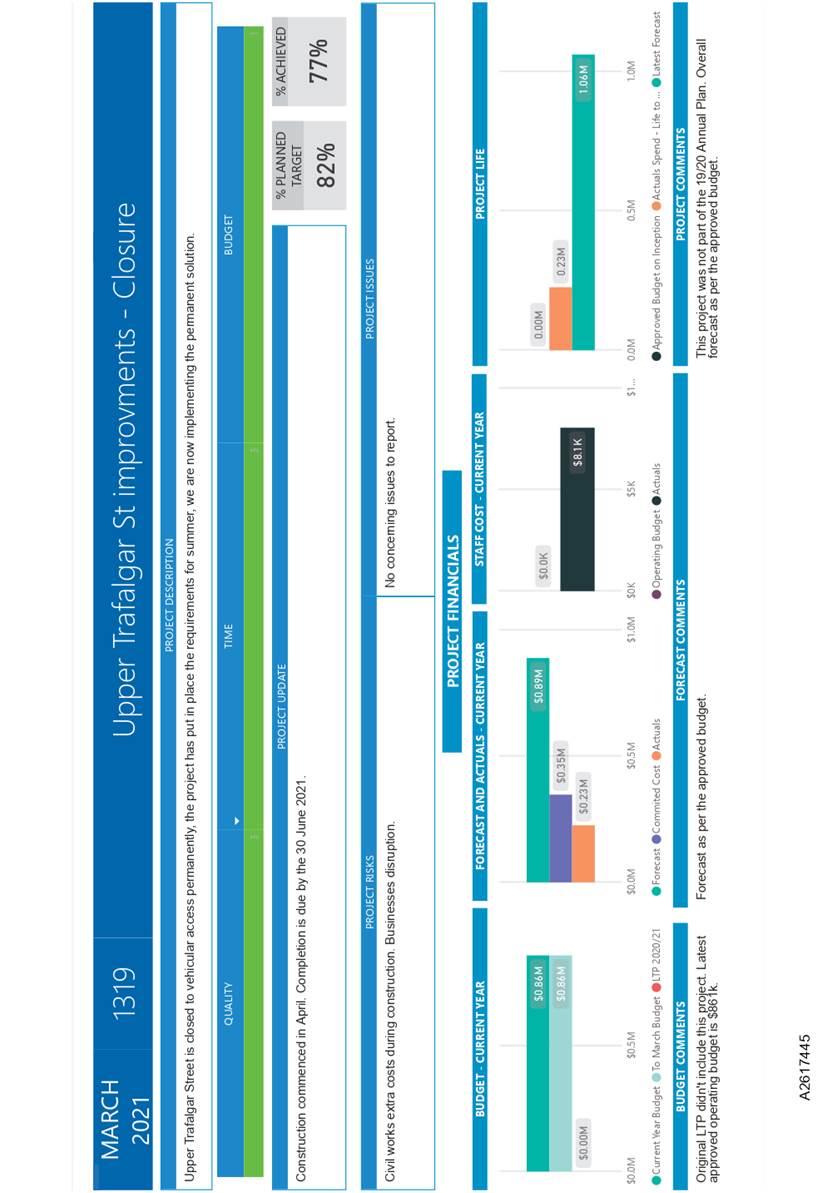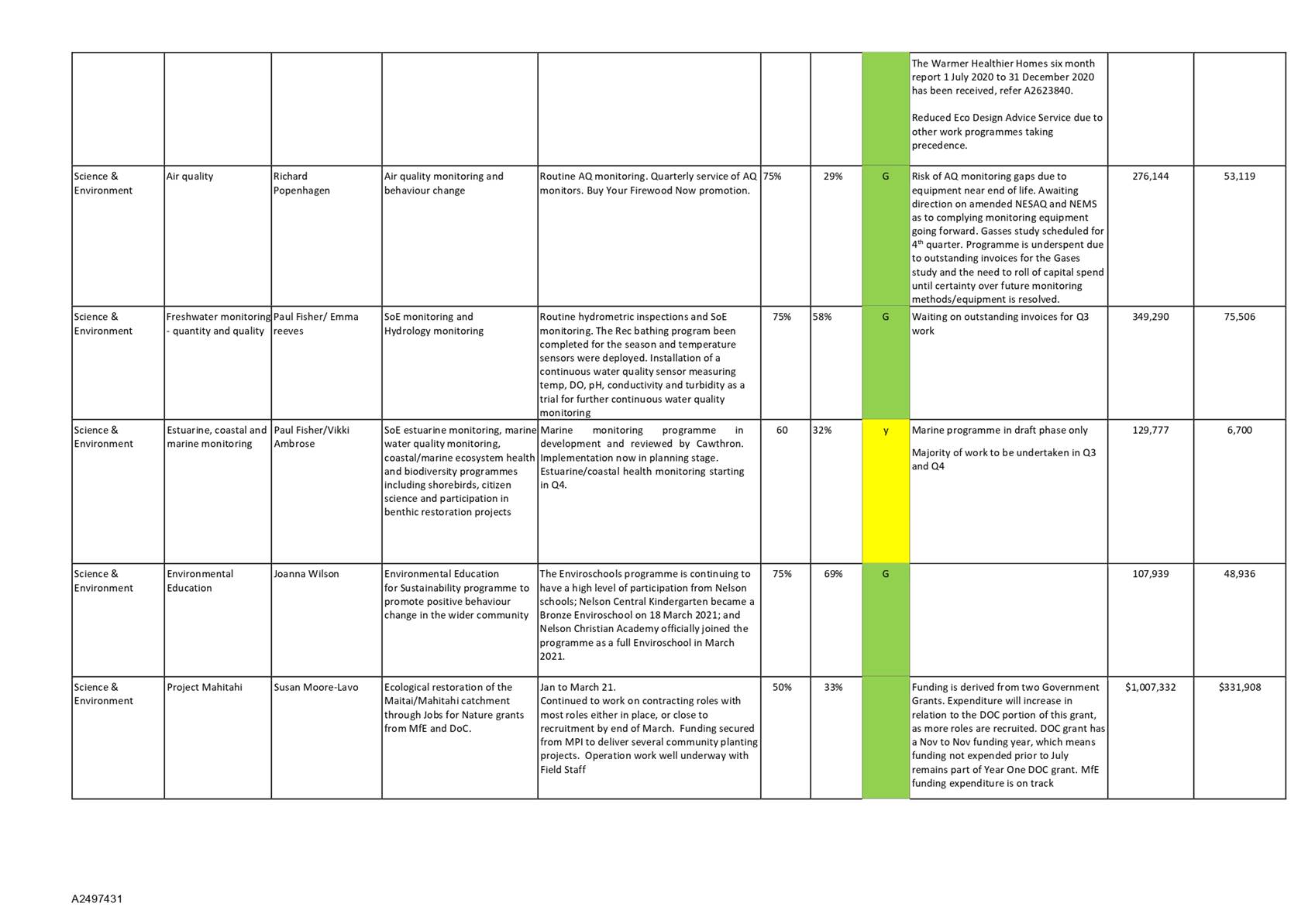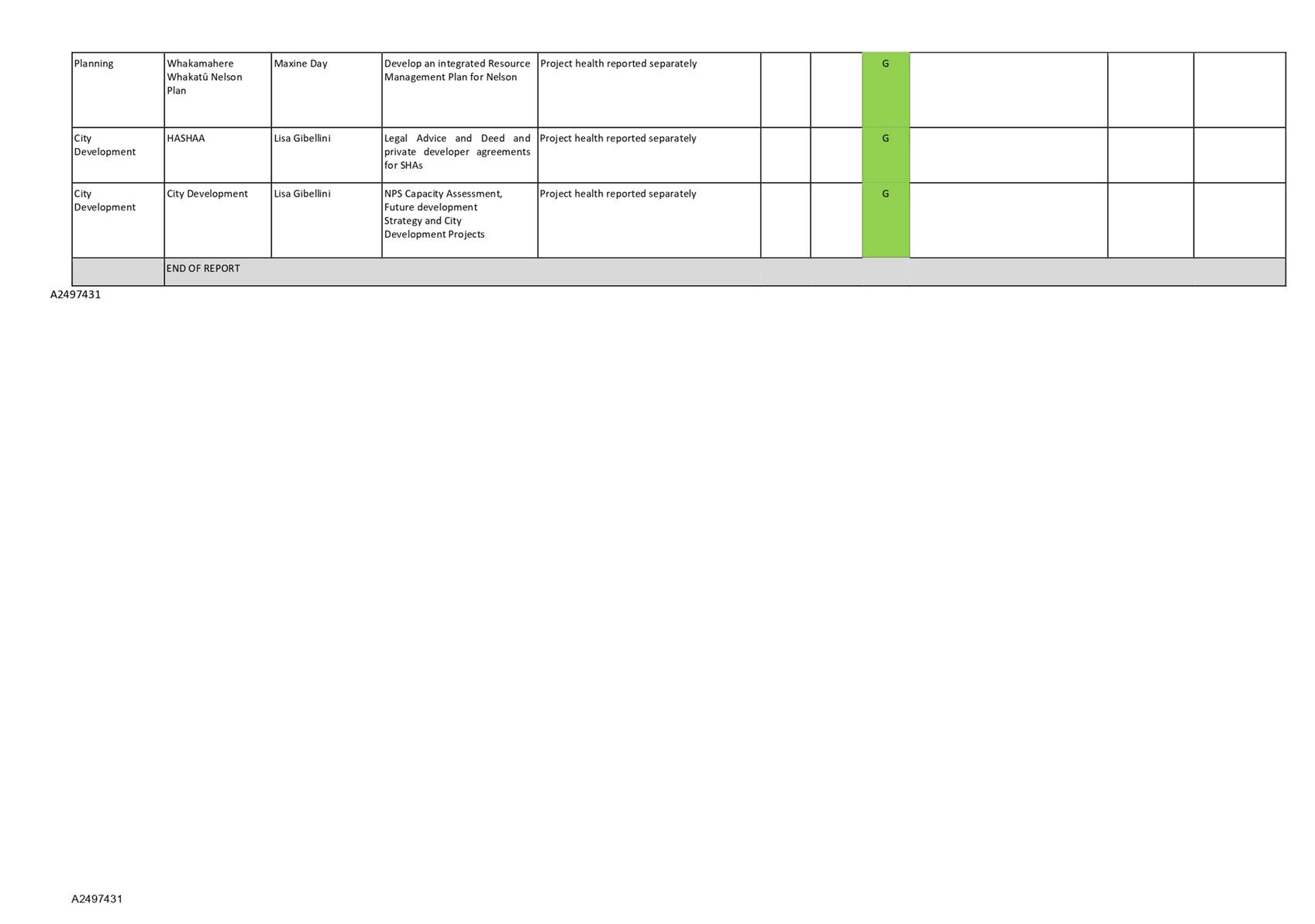Environment
and Climate Committee
Areas of Responsibility:
·
Building control matters, including
earthquake-prone buildings and the fencing of swimming pools
·
Brook Waimarama Sanctuary Trust
·
Bylaws, within the areas of
responsibility
·
Climate Change policy, monitoring
and review
·
Climate change impact and strategy
overview - mitigation, adaptation and resiliency
·
Climate change reserve fund use
·
Environmental programmes including
(but not limited to) warmer, healthier homes, energy efficiency, environmental
education, and eco-building advice
·
Environmental regulatory and
non-regulatory matters including (but not limited to) animals and dogs,
amusement devices, alcohol licensing (except where delegated to the Alcohol
Regulatory and Licensing Authority), food premises, gambling, sugar-sweetened
beverages and smokefree environments, and other public health issues
·
Environmental science monitoring
and reporting including (but not limited to) air quality, water quality, water
quantity, land management, biodiversity, biosecurity (marine, freshwater and
terrestrial), pest and weed management, and coastal and marine science
·
Environmental Science programmes
including (but not limited to) Nelson Nature and Healthy Streams
·
Hazardous substances and
contaminated land
·
Maritime and Harbour Safety and
Control
·
Planning documents or policies,
including (but not limited to) the Land Development Manual
·
Policies and strategies relating to
compliance, monitoring and enforcement
·
Policies and strategies related to
resource management matters
·
Pollution control
·
Regulatory enforcement and
monitoring
·
The Regional Policy Statement,
District and Regional Plans, including the Nelson Plan
·
Urban Greening Plan
Delegations:
The committee has all of the responsibilities, powers,
functions and duties of Council in relation to governance matters within its
areas of responsibility, except where they have been retained by Council, or
have been referred to other committees, subcommittees or subordinate
decision-making bodies.
The exercise of Council’s responsibilities, powers,
functions and duties in relation to governance matters includes (but is not
limited to):
·
Monitoring Council’s
performance for the committee’s areas of responsibility, including
legislative responsibilities and compliance requirements
·
Developing, monitoring and
reviewing strategies, policies and plans, with final versions to be recommended
to Council for approval
·
Developing and approving draft
Activity Management Plans in principle, for inclusion in the draft Long Term
Plan
·
Reviewing and determining whether a
bylaw or amendment, revocation or replacement of a bylaw is appropriate
·
Undertaking community engagement,
including all steps relating to Special Consultative Procedures or other formal
consultation processes other than final approval
·
Approving submissions to external
bodies or organisations, and on legislation and regulatory proposals
·
Approval of increases in fees and
charges over the Consumer Price Index (CPI)
Powers to Recommend to Council:
In the following situations the committee may consider
matters within the areas of responsibility but make recommendations to Council
only (in accordance with sections 5.1.3 - 5.1.5 of the Delegations Register):
·
Matters that, under the Local
Government Act 2002, the operation of law or other legislation, Council is
unable to delegate
·
The purchase or disposal of land or
property relating to the areas of responsibility, other than in accordance with
the Long Term Plan or Annual Plan
·
Unbudgeted expenditure relating to
the areas of responsibility, not included in the Long Term Plan or Annual Plan
·
Approval of notification of any
statutory resource management plan, including the Nelson Plan or any Plan
Changes
·
Decisions regarding significant
assets
·
Actions relating to climate change
not otherwise included in the Annual Plan or Long Term Plan
·
Approval of final versions of
strategies, policies and plans
Item 7: Environmental
Management Fees and Charges Review 2021 - Deliberations Report
|

|
Environment and Climate Committee
10 June 2021
|
REPORT R24824
Environmental
Management Fees and Charges Review 2021 - Deliberations Report
1. Purpose
of Report
1.1 To
deliberate on the Environmental Management fees and charges review 2021 and
decide on the fees and charges to apply under the Resource Management Act 1991
(RMA) and Housing Accord and Special Housing Areas Act 2013 (HASHAA), Building
Act 2004, Food Act 2014, and the Public Health Act 1956.
2. Summary
2.1 Public
consultation on the proposed Environmental Management fees and charges has
occurred. Nine submissions were received.
2.2 It
is recommended the Committee approve the proposed new fees and charges for all
activities to commence on 1 July 2021, except charges under the Food Act.
Concern was raised in submissions regarding the timing of introducing the new
food fees and charges due to the COVID-19 challenges for some in the hospitality
sector. It is recommended that the Committee delay the introduction of
the new food fees until 1 December 2021.
3. Recommendation
|
That the Environment and Climate Committee
1. Receives
the report Environmental Management Fees and Charges Review 2021 -
Deliberations Report (R24824)
and its attachments (A2621284, A2635824, A2635787, A2661168, A2652035 and
A2669343); and
2. Notes the submissions received as part of the special
consultative procedure on the review of the Environmental Management fees and
charges in Attachment 1 (A2621284); and
3. Approves amendments to the
fees and charges under the Building Act 2004 as outlined in Attachment 2
(A2635824) to commence from 1 July 2021; and
4. Approves amendments to the
charges under the Resource Management Act 1991 and Housing Accords and
Special Housing Areas Act 2013 as outlined in Attachment 3 (A2635787) to
commence from 1 July 2021; and
5. Approves amendments to the
Food Act 2014 fees and charges as outlined in Attachment 4 (A2661168)
to commence from 1 December 2021; and
6. Approves amendments to the Public
Health Act 1956 fees and charges as outlined in Attachment 5 (A2652035) to
commence from 1 July 2021.
|
4. Background
4.1 On
17 February 2021 (R21403) the Environment and Climate Committee approved four
statements of proposal for a special consultative procedure (refer attachment 6
A2669343).
4.2 The
consultation period occurred between 16 March and 16 April 2021. Nine
submissions were received and are attached (Refer Attachment 1 A2621284).
Targeted engagement occurred across various sectors associated with the special
consultation, through various methods including mailchimp, newsletters and
discussion with associations.
4.3 Council
can decide on the level of fees and charges within the range of options
provided in the statement of proposal, that is, between no change and the
change proposed (but not higher).
5. Discussion
Building fees
and charges
Submissions
5.1 Three
submissions were received regarding the proposed building fees and
charges. Submitters raised concerns with:
· The ability of the
online portal to accept large hand-drawn plans.
· The inability to come
into the Council to have plans checked.
· The potential
reliability of the portal and reduction in communication to problem
solve.
· The online portal
efficiency. Suggested if it has led to efficiencies why haven’t the
costs gone down?
· Lack of efficiencies in
Council’s operations and knowledge. Noted the private sector is
mindful when any increases are made.
· The charge out rate
being not justified. Suggested the charge out rate was commensurate with
more qualified professions.
· The fees being
significant and out of proportion with CPI.
· The service needs to be
improved with accountability, increased accuracy, and a better break down of
the costs when requested by clients.
Comment
on Submissions
5.2 Councils
across New Zealand have been moving to electronic methods for the receiving and
processing of building consents over recent years. The
electronic portal is the primary way consent applications are received.
Hardcopies, including for large hand-drawn plans, are the exception but can be
accepted with a charge used to scan these documents into the system.
5.3 The
use of electronic files streamlines the process for councils between the
various departments e.g. planning and infrastructure. Having the files
stored electronically also assists with record keeping. There have been a
few issues with the portal however, these have now been resolved including
training for some customers using the portal. The team has recently met
and is working on a number of actions to provide an even better customer
service and this includes communication with the building industry over
requirements when a building consent is lodged and how to do this effectively
through the portal.
5.4 Officers
are mindful of the need to be available to discuss any issues and resolve
matters as quickly and efficiently as possible. Officers are contactable
by phone, face to face meetings including through the duty building officer or
by email. Where a request is made for a more detailed breakdown of costs
this request can be met.
5.5 In
terms of the qualifications of officers, competency training is regularly
completed to meet all legislative requirements. It is acknowledged there
is a severe national shortage of qualified, competent resource in the building
sector. It is therefore critical that Council retain staff, their skills
and knowledge, to ensure all legislative requirements are met.
5.6 The
proposed increase is higher than CPI but comparisons have been made with other
councils and the proposed rates are consistent with similar sized councils as
outlined in the 17 February 2021 Committee meeting report R21403 (refer
attachment 6 A2669343).
Recommendation and Discussion
5.7 As
proposed in the SCP documentation, an hourly charge out rate is recommended of
$164 (up from $160) and $200 (up from $160) for commercial properties
recognising the complexity of commercial builds. The proposed building fees and
charges are detailed in Attachment 2 (A2635824) and are proposed to commence
from 1 July 2021. The costs met by the fees and charges include consent
processing, inspections, compliance and responding to public enquiries.
5.8 The
Revenue and Financing Policy requires 60-80% of the total costs to be met by
fees and charges. The proposed fees and charges will cover 71% of the
costs of the activity.
5.9 The
Committee will have noted from the Environmental Management Group’s
Quarterly Report, the Building income is $649,000 greater than budget. In
setting the budgets for the 2020/21 year, officers predicted a downturn in the
construction sector and consequently a reduction in income. This has not
occurred. Given the increased number of consents there will be an
increased use of consultants to keep on top of timeframes and this will
increase the cost of processing which will utilise budgets.
Resource
Consents and HASHAA fees and charges
Submissions
5.10 No
submissions were received regarding the proposed Resource Management Act 1991
(RMA) and Housing Accords and Special Housing Areas Act 2013 (HASHAA) fees and
charges.
Recommendation and Discussion
5.11 As
proposed in the SCP documentation, it is recommended the Committee approve the
fees and charges outlined in Attachment 3 (A2635787), based on the increased
hourly charge out rate of $162 (from $160) and commencing from 1 July
2021. The activities include consent processing, monitoring, enforcement
and responding to public enquiries.
5.12 The
Revenue and Financing Policy requires 40-60% of resource consent activity costs
to be recovered from charges. The proposed fees and charges will cover
45% of the costs of the activity and is in line with other regulatory hourly
charge out rates.
Food Act fees and charges
Submissions
5.13 Five
submissions were received regarding the proposed food fees and charges.
Submitters raised concerns with:
· The timing of
introducing these fee increases. They suggested the increase not become
effective until the 2022-23 financial year at the earliest or staged over
future years.
· The processing of the
Food Control Plans is very onerous. They suggested a streamlined digital
based template be introduced such as either Business Connect (https://businessconnect.govt.nz
/help/) or Chomp (https://www.chomp.nz/),
and that it would reduce time and cost for all involved.
· The financial pressures
currently on the hospitality sector, including cost structure increases such as
electricity (+5%), insurance (+5%), minimum wage (+21% over three years).
This is cumulative across suppliers that pass these on to end users.
Whilst they agreed increases are needed from time or time, this is not the time
to be putting any further pressure on the hospitality industry.
· The hourly rate of the
hospitality sector workers of about $22.00 per hour. They noted that
owners earn little more than this themselves. Including employee
entitlements, the true cost per hour worked for these businesses is around
double this rate. They also suggest the Council charge out rate is too
high.
· The role the hospitality
sector provides Nelson with its much-needed diversity and choice to the
community. It highlights the inequity or severe under-valuing of the
value the hospitality sector brings to our community.
· The proposed increase of
about 9% and noted CPI is currently only 1.4%.
Comment on Submissions
5.14 Officers
will review the proposed Business Connect and Chomp proposals suggested for
digital based templates to help reduce the time and cost involved. The
systems will need to be assessed for compliance with the Ministry of Primary
Industries registration and reporting requirements.
5.15 Commentary
on financial pressures in the hospitality sector is included in the discussion
section below.
Options for Food Fees and
Charges
5.16 The
advantages and disadvantages of four options are outlined below:
|
Option 1: Delay the increase
in fees and charges as proposed (hourly rate $162 and licence fee $255)
commencing 1 December 2021 (RECOMMENDED OPTION)
|
|
Advantages
|
· Less
criticism from operators for increasing fees in the current economic context.
· Recognises
the challenges faced by the sector this year.
· More
in line with other councils.
· The
rates component is reduced over time.
|
|
Risks and Disadvantages
|
· Rates
savings are delayed for this activity for 5 months.
· Lost
income of about $4,000 which will need to be met by the General Rate,
although recovered in the following year.
|
|
Option
2: Retain the current fees and charges
|
|
Advantages
|
· Operators
do not face increased fees.
· Would
not receive criticism.
· Recognises
the challenges faced by some of the sector this year.
|
|
Risks and Disadvantages
|
· The
cost of the food activity is not sufficiently covered by income from fees and
charges.
· Does
not meet the cost recovery requirements of the Food Act 2014.
· Increases
will be required in the future and likely to be greater.
· The
hourly rate continues to be inconsistent with other regulatory services.
· No
rates savings are realised for this activity.
· A
further special consultation procedure would be required at a later date.
|
|
Option
3: Increase fees and charges (hourly rate $162 and licence fee $255)
(commencing 1 July 2021) recovering 48% of the costs
|
|
Advantages
|
· The
proportional cost of services is better met by users/food operators than
ratepayers.
· Better
meets the cost recovery requirements of the Food Act 2014.
· Hourly
rates are more consistent with other regulatory functions.
· The
general rates component is reduced.
· Recognises
food operators have not received an increase since the fees and charges were
introduced in 2016.
|
|
Risks and Disadvantages
|
· Dissatisfaction
and likely to receive criticism by operators for the increase in costs at a
challenging time.
· Could
increase costs following non-payments requiring more staff follow up time.
|
|
Option
4: Phase in the proposed increase over two or more years
|
|
Advantages
|
· Less
criticism from operators for increasing fees in the current economic context.
· Recognises
the challenges faced by the sector.
|
|
Risks and Disadvantages
|
· Rates
savings and recovering lost income are delayed.
· Unlikely
to reach alignment with other councils’ charges as they continue to
increase in the interim.
· May
not prevent a significantly larger increase later.
· Further
special consultative procedures are required.
|
Recommendation and Discussion
5.17 As
proposed in the SCP documentation, it is recommended that the food fees and
charges be $162 hourly rate and an initial licence fee of $255. To
recognise the hardship for some it is proposed there be a delay to the
increase, to commence on 1 December 2021. The Revenue and Financing
Policy requires 40-60% of food activity costs to be recovered from
charges. This proposal recovers 51% from fees and charges of the costs of
the activity. (Refer to Attachment 4 A2661168 for the proposed fees).
5.18 The
hourly rate is in general accordance with Tasman’s hourly rate of $160
(licence fee $242) and Marlborough $145 (licence fee $254). The hourly
rate is less than similar sized councils, such as Napier City Council and New
Plymouth District Council. These were included in the Committee’s report
R21403 (refer attachment 6 A2669343).
5.19 The
food activities include registrations, verifications, compliance and monitoring
functions, and responding to public enquiries. As previously advised the
food fees and charges have not increased since 2016, when the new Food Act came
into force. It was noted at the time the food fees and charges would not
be increased until all businesses transitioned to the new regime, which has now
occurred. Forecasting a downturn due to COVID-19, officers budgeted for
reduced food income, but the income is still down on that estimate.
Currently, income is $40,500 under budget year to date.
5.20 If
the Committee accepts the proposed hourly rate of $162 a food premises will see
an increase in a new registration to $688.50 (up from $629 and a difference of
$59.50) and thereafter $479 annually (up from $444 and a difference of
$35). A national programme would see an increase to $162 (up from $148)
in the first year and thereafter a total of only $81 annually (up from $74).
5.21 Revenue
of $110,000 and costs of $229,500 are estimated for the 2021/22 financial year
based on the proposed $162 hourly rate. If the current hourly rate of
$148 were to be used $100,025 income is estimated and the user contribution
would be 44%.
5.22 Officers
suggest some consideration of potential hardship over the winter period could
be provided with a delay of 5 months to the commencement of the increased
charges (to 1 December 2021). Paymark data shows the last 12-month
consumer spend (cafés, restaurants, bars, and takeaways) has not
significantly changed on the same period as a year earlier. The food
sector has experienced some increased costs e.g. the minimum wage has increased
to $20 per hour from 1 April 2021.
5.23 The potential loss of income
by delaying by 5 months, will be about $4,000 and the General Rate would need
to cover this. The Committee could consider extending the period to 1
year prior to the charges increasing and this would result in a loss of income
of about $10,000.
5.24 The
new Food Act requires Council when setting its fees to cover all reasonable
costs incurred. This is a cost recovery model and must consider the
matters outlined in section 198(2) of the Food Act, which are:
5.24.1 Equity
– funding for services should generally, and to the extent practicable be
sourced from the users or beneficiaries of those services at a level
commensurate with their use; and
5.24.2 Efficiency
– costs should generally be allocated and recovered to ensure maximum
benefits are delivered at minimum cost; and
5.24.3 Justifiability
– cost should be collected only to meet the actual and reasonable costs
(including indirect costs) of the service; and
5.24.4 Transparency
– costs are identified and allocated as closely as practicable to
tangible service provisions.
5.25 The
matters outlined in paragraph 5.24 above have been considered and the proposal
also meets the requirements of the Revenue and Financing Policy.
Public Health fees and charges
Submissions
5.26 A
submission was received regarding the proposed hairdresser fee. The
submitter questioned the increase and the costs for the service. They
suggested this was too much compared to other industries. No submissions
were received regarding offensive trades. No submissions were received on
the proposed new fees and charges for animal control and marine oil
response.
Comment on Submissions
5.27 The
proposed hairdresser licensing fee hourly rate of $162 (from $155) is in line
with similar sized Councils, New Plymouth District Council $156, Palmerston
North City Council $167, Marlborough District Council $178 and Tasman District
Council $183. It takes an hour to process an annual licence fee including
a site visit.
Recommendation and Discussion
5.28 As
proposed in the SCP documentation, it is recommended the Committee:
a) Increase
the hourly charge out rate to $162 for public health covering 45% of the costs
of the activity. The Revenue and Financing Policy requires 40-60% of
public health activity costs to be recovered from charges.
b) Increase
the offensive trades fees to $243 (from $236).
c) Increase
the animal control fees to $162 (from $125).
d) The
marine oil response be an hourly rate at $162, and disbursements be at cost.
Refer to Attachment 5 A2652035
for the proposed new fees and charges commencing from 1 July 2021.
5.29 The
proposed changes are in line with other regulatory hourly rates and are
considered reasonable to meet the costs of the activities.
6. Options
6.1 The
options are to:
i. Change
the fees and charges as proposed in the public consultation documents but delay
the commencement date for Food Act fees and charges.
ii. Decide
not to make any changes to fees and charges for the 2021/22 financial year and
keep the current fees and charges.
6.2 The
options are outlined below with the preferred option being option 1.
|
Option 1: Change fees and
charges as proposed commencing 1 July 2021 for RMA, HASHAA, Building and
Public Health and commencing 1 December for Food fees and charges
(RECOMMENDED OPTION)
|
|
Advantages
|
· The
increase in the fees and charges will ensure those gaining the benefit from
the service pay a fair proportion of the costs of the service so there is
less need for ratepayer funding.
· Is
consistent with what was proposed in the consultation.
· Minimises
pressure on rates.
|
|
Risks and Disadvantages
|
· Dissatisfaction
from customers that the increase in fees is unreasonable.
|
|
Option
2: Status quo – no changes to the fees and charges
|
|
Advantages
|
· High
level of customer satisfaction.
|
|
Risks and Disadvantages
|
· Ratepayers
will need to contribute a higher proportion of the costs of the services.
· Likely
to require a higher increase in fees and charges at a later date.
· The
fees may no longer be at an appropriate level that meets the criteria for setting
fees in the relevant legislation if the customer does not pay for the actual
costs of the services they receive.
|
7. Conclusion
7.1 The
proposed changes to fees and charges are compliant with relevant legislation
and will achieve a better proportionality between those receiving the benefit
of that service and ratepayers.
7.2 The
recommendations are for the amended fees and charges to come into effect from 1
July 2021 except for Food fees and charges which are proposed to commence from
1 December 2021. The proposed 5 month delay for Food fees and charges,
recognises the current economic impact for some in the hospitality sector, as a
result of COVID-19 restrictions on travel.
Author: Clare
Barton, Group Manager Environmental Management
Attachments
Attachment 1: A2621284
Draft Environmental Group Fees and Charges Review 2021- TOTAL SUBMISSIONS -
19Apr2021 ⇩
Attachment 2: A2635824
Building Unit Fees and Charges commencing 1 July 2021 ⇩
Attachment 3: A2635787
Resource Management Act 1991 and Housing Accords and Special Housing Areas Act
2013 Fees and Charges Commencing 1 July 2021 ⇩
Attachment 4: A2661168
Food-Fees-and-Charges from 1 December 2021 ⇩
Attachment 5: A2652035
Public Health fees and charges from 1 July 2021 ⇩
Attachment 6: A2669343
- 2021 Environmental Management Fees and Charges review - 17 February 21 ⇩
|
Important considerations for decision making
|
|
1. Fit
with Purpose of Local Government
The recommendations in the report provides for the
cost-effective delivery of regulatory services that protect the
environmental, cultural and social well-being of the community.
|
|
2. Consistency
with Community Outcomes and Council Policy
The recommended charges assist with achieving the
stated funding outcomes in the Long Term Plan. The resourced regulatory
activities also contribute to our natural environment being healthy and
protected, ensuring our communities are healthy and safe and communities have
access to social and recreational activities.
|
|
3. Risk
The do-nothing option will not be consistent with
the criteria for fixing charges specified in the various legislation.
It will also likely to lead to greater percentage increases in the
future. Increasing fees and charges by too high a level however could
result in dissatisfaction by those impacted by the increase even if that
increase is potentially justified. Proposed increases minimise the risk
of dissatisfaction by increasing fees at a reasonable rate compared to
current fees.
|
|
4. Financial
impact
The proposed increases in charges will better enable
costs for the services to be met in the medium to long-term at an appropriate
proportion between applicants/consent holders and ratepayers and meet the
Revenue and Financing Policy requirements for each activity.
|
|
5. Degree
of significance and level of engagement
This matter is of medium significance because
proposed increases while justified will impact applicants and consent
holders. If the Committee chooses to delay or phase in the food fees
and charges this will also affect the wider community as a greater percentage
of the General Rate will be required to meet the costs of the activity.
|
|
6. Climate
Impact
The provision of regulatory and non-regulatory
services directly assists Council to take appropriate action or advocate for
others to take action to address the impacts of climate change.
|
|
7. Inclusion
of Māori in the decision making process
No specific consultation with Māori has been
undertaken regarding this report.
|
|
8. Delegations
The Environment and Climate Committee has the
following delegation:
Areas of Responsibility:
· Building control matters, including earthquake-prone
buildings and the fencing of swimming pools
· Environmental regulatory and non-regulatory matters
including (but not limited to) animals and dogs, amusement devices, alcohol
licensing (except where delegated to the Alcohol Regulatory and Licensing
Authority), food premises, gambling, sugar-sweetened beverages and smoke-free
environments, and other public health issues
· Hazardous substances and contaminated land
· Maritime and Harbour Safety and Control
· Pollution control
· Regulatory enforcement and monitoring
Delegations:
· The
committee has all of the responsibilities, powers, functions and duties of
Council in relation to governance matters within its areas of responsibility,
except where they have been retained by Council, or have been referred to
other committees, subcommittees or subordinate decision-making bodies.
· Approval
of increases in fees and charges over the Consumer Price Index (CPI)
|
Item 8: Environmental
Management Group Quarterly Report - 1 January - 31 March 2021
|

|
Environment and Climate Committee
10 June 2021
|
REPORT R23741
Environmental
Management Group Quarterly Report - 1 January - 31 March 2021
1. Purpose
of Report
1.1 To
report on financial and non-financial performance measure results for the third
quarter of the 2020/2021 financial year for the Environmental Management Group
activities. The activities included are: Building, City Development,
Resource Consents and Compliance, Planning, and Science and Environment.
Climate Change is also included in this report.
2. Recommendation
|
That the Environment and Climate Committee
1. Receives
the report Environmental Management Group Quarterly Report - 1 January - 31
March 2021 (R23741) and its
attachments (A2624202, A2616129, A2595956, A2611893, A2623840, A2623547,
A2617445, and A2497431).
|
3. Financial
Results





3.1 Monitoring
the Environment expenditure is less
than budget by $213,000. Hill Country Erosion expenditure is behind
budget by $154,000, Sustainable Land Management expenditure is behind budget by
$29,000, and Marine Sediment Monitoring expenditure is behind budget by
$23,000. These are expected to be spent by the end of the year.
3.2 Developing
the Resource Management Plan expenditure is less than budget by $564,000. Base expenditure is
$495,000 less than budget which is due to staff taking on some work instead of
consultants while a number of costs have been delayed in relation to freshwater
and RMA National Policy Statements. There is an anticipated underspend of
$588,000, of which $150,000 will be saving.
3.3 City
Development expenditure is less
than budget by $206,000. CBD Development is behind budget by
$75,000, City Development Project is behind budget by $39,000, and City
Development Consultants are behind budget by $49,000. It is anticipated that
these will be spent this year.
3.4 Environmental
Advocacy/Advice income is greater
than budget by $89,000. The Maitai ERP Grant income is $94,000 ahead
of budget.
3.5 Environmental
Advocacy/Advice expenditure is less
than budget by $430,000. The Maitai ERP Grant expenditure is behind
budget by $158,000 with an underspend expected of $187,000 in this financial
year, due to the timing of the grant and the expenditure which both cross
financial years. Expenditure will be directly offset by grant income at year
end. Terrestrial Biodiversity is behind budget by $106,000 and Waterways
Biodiversity is behind budget by $100,000 with both anticipated to be fully
spent.
3.6 Alcohol
Licensing income is less than budget by $55,000. Application
Fees are under budget $32,000 and Annual Fees are under budget by $12,000 as a
result of lower activity caused by COVID-19.
3.7 Public
Counter Land & General expenditure is less than budget by $60,000. Staff operating
expenditure is $64,000 under budget due to Processing LIM costs being lower
than originally planned. It is anticipated that Processing LIM costs will be
$115,000 under budget by the end of the year.
3.8 Building
Services income is $649,000
greater than budget. Building consent fees are ahead of budget by
$348,000, BCA QA levy income is ahead of budget by $148,000, Building Warrant
of Fitness is ahead of budget by $105,000 and Insurance Levy income is $72,000
ahead of budget. This is due to higher consent numbers compared with
prior years as well as reduced budgets for an expected decrease in income due
to COVID-19. It is anticipated that income will be over budget by
$687,000 at year end.
3.9 Building
Services expenditure is less
than budget by $53,000. Several vehicles have been sold for which
depreciation of $40,000 was recovered which in turn has lowered depreciation
expense and caused a negative expense overall.
3.10 Resource
Consents income is greater
than budget by $55,000. Resource consent income is $44,000 ahead of
budget and expected to be 87,000 over budget for the year.
4. Key
Performance Indicators
4.1 The
Environmental Management Group is on track to meet all but three of its
performance measures. Refer to Attachment 1: Environmental Management
Group Performance Measures Levels of Service (A2624202) for more information.
4.2 There
were seven breaches of the building statutory timeframes (five building
consents and two code compliance certificates (CCCs)). All instances have been
reviewed and steps implemented to mitigate occurrences.
4.3 Building
consents are now being outsourced to external contractors to keep on top of the
workload and to ensure statutory timeframes are maintained going forward.
4.4 Resource
consent compliance timeframes are 89 per cent for the third quarter. Nine
resource consents were issued late, however, six were only up to three days
over the 20-working day timeframe. The consents team is currently
carrying two vacancies, and these are being actively recruited.
4.5 The
alcohol licensing requirement of inspecting 100 per cent of licensed premises
is unlikely to be met. This is due to the new Sale and Supply of Alcohol
Act only requiring high risk premises be inspected. Currently, 89 per
cent have been inspected. This measure will be amended as part of the new
Long Term Plan levels of service.

5. Summary
of activities
5.1 Building consents formally
received are up 10 per cent on the same quarter last year and LIM applications
Year to Date (YTD) (566) are significantly higher. The formally received
consent numbers are now tracking at consistent levels to previous years. Refer
Attachment 2: Building and Consents and Compliance statistics 1 Jan- 31 Mar
2021 (A2616129).
5.2 In
the City Development activity: the Riverside Pop-Up Park shade sails have been
completed; the City Centre Spatial Plan engagement is underway; the draft
Development Contributions Policy has been out for consultation; and the Upper
Trafalgar Street multi-function light poles and catenary lighting are under
construction.
5.3 Work
on the Whakamahere Whakatū Nelson Plan (Nelson Plan) has been
continuing. Officers have been developing and preparing various technical
reports to support the draft Nelson Plan.
5.4 Feedback on the Coastal Inundation engagement in November
2020 was presented to Council in February 2021. A series of actions
arising from that feedback is now being progressed.
5.5 The
harbourmaster and deputy harbourmaster completed nearly 700 safety
checks. They spent around 40 per cent of their time on the water
patrolling or taking part in exercises and events.
5.6 The
normal freedom camping patrols ended at Easter. Due to COVID-19 and the
closed borders only 4,484 vehicle
checks were carried out over the summer period. This is significantly
down on previous years.
5.7 In
March 2021, a Nelson/Tasman combined oil spill response exercise was carried
out. The exercise included planning and deploying response equipment
(boom and skimmers).
5.8 The
summer recreational bathing programme was completed for the year. 100% of
monitoring was completed and all exceedances notified, achieving the level of
service target for 20/21 financial year. Of 275 samples, there were six red
alert and 22 amber alert exceedances. Red alerts are where the site has
not met the water quality standards and the water should be avoided.
Amber alerts mean caution is advised. These results are consistent with
previous years.
5.9 There
were no exceedances of the National Environmental Standards for Air Quality
(NESAQ) during this quarter.
5.10 The
Science and Environment team has lodged 4 applications for funding through Jobs
for Nature. One was unsuccessful,
and the other three are awaiting an outcome.
5.11 Of
note, Council hosted DOC officers from the Wellington National Office in
March. The DOC officers had come to view the good work being undertaken
on Project Mahitahi. Positive feedback on the project has been received
from DOCs national office, and this positive feedback has been given to
ministers for their information. A video about the visit is available
here: https://www.youtube.com/watch?v=ictftjBlW-8
6.
Risks and Challenges
Building
6.1 Recruitment
in specialist building roles continues to be a challenge. There is a
national shortage of skilled and experienced Building Control officers.
This is exacerbated by recruitment by private consultants and Kāinga
Ora. Officers are exploring solutions to fill vacancies.
City Development
6.2 The
City Development team is working to capacity. Options for additional
resourcing are being considered to mitigate risks of delivery, particularly for
the housing actions.
Planning
6.3 Work programmes are likely to be
affected by the Resource Management Act (RMA) Reform announcements; and ongoing
delays to the release of National Policy documents (e.g. NES Air Quality;
Highly Productive Land; and Indigenous Biodiversity). Further national directions
are also being considered by the Ministry for the Environment (MfE).
6.4 There are risks that these may
be released while the Nelson Plan is being developed or heard. Where the
timing does not align for inclusion into the notified version of the Nelson
Plan, a subsequent plan change or variation may be required.
6.5 A report on the implications of
the RMA reforms for the Nelson Plan programme is being prepared for a future
Committee meeting.
Resource Consents and
Compliance
6.6 The auditors identified some LTP measures
covering dog and animal control, food safety and public health, alcohol
licensing and pollution response as not meeting their requirements. A new
report has been introduced that helps capture this data. However, this
report still has limitations and has difficulty differentiating working days
and the weekend. Officers are continuing to work with the supplier to
ensure the report is fit for purpose.
Science and Environment
6.7 Work
is scheduled to begin in the fourth quarter on the building of the laboratory
and storage space for Hydrology and Water Quality Programmes. The final
laboratory fitout should be completed in the first quarter of FY 2021/22 with
restoration of full service.
6.8 There
is a risk of Air Quality monitoring gaps due to several monitors nearing end of
life and frequently requiring repairs. Officers are awaiting the amended
National Environmental Standards for Air Quality for direction on the type of
monitors required going forward. Options to lease monitors in the meantime are
being investigated.
7. Legal
Proceedings Update
7.1 The Building team currently has four legal
proceedings in progress. These are being reported to the Audit, Risk and
Finance Committee.
7.2 A hearing of a dog attack incident occurred
on 2 December 2020 and the Judge’s decision to euthanise the dog was made
on 18 December 2020. This decision was appealed although not upheld by
the Court.
7.3 A further prosecution was made against a
disqualified dog owner that continued to have two dogs (one of which attacked
another dog). This has now been resolved with the High Court convicting
the owner and ordering the dog be destroyed. The dog was to be euthanised
by 9 April, however, the dog has subsequently disappeared and officers are unaware
of its whereabouts.
7.4 Another dog that attacked a policeman has
been seized. This case is also recommended for prosecution and is
proceeding toward a hearing, with the next procedural date being 19 May 2021.
7.5 Officers have received an update on case
management proceedings under the Maritime and Coastal Area Act (Takutai Moana)
(MACA). Council has joined a number of applications, before the High
Court, as an interested party. The Court has recently issued a minute
outlining that hearings for MACA applications will be set down in 2022.
The Committee will be provided with updates as matters proceed.
8. Climate
Change
8.1 The Council’s operational footprint
has been measured and audited by Toitū, a government-owned certification
body, for the following two periods FY 2018/19 and FY 2019/20. Council is
expecting to become certified next month after technical review is completed by
Toitū. From the baseline year set up at FY 2017/18, Council draft
results show a reduced total of 26% GHG emissions. Reductions in a carbon
footprint inventory are represented by a combination of two factors:
8.1.1 reducing the quantity of tonnes, kWh,
Litres, etc; and
8.1.2 yearly changes in the emission factors.
e.g.: the consumption of electricity (kWh) was reduced as a result of LED
upgrade, and the electricity’s emission factor used to estimate the
tonnes of CO2 decreased as a result of a higher component of renewable energy
injected to the national grid.
8.2 One of the highest emission reductions is
from landfill, due to a slight reduction in the quantity of mixed waste going
to landfill and a reduction in the emission factor. (The quantity of mixed
waste considered in this inventory represents NCC’s 50% as per the equity
approach.)
8.3 Electricity emissions have also reduced
20% from the base year. The change to LED Street lights has been the main
contributor to this reduction, which also has an estimated saving cost of
$137,000/year (based on 15 c/kWh, variable).

9. Environmental
Management Activity Update by Business Unit
BUILDING
Achievements
9.1 The building inspectors undertook a total of
1,792 inspections this quarter compared to 1,237 in 2020, and 949 in
2019. This quarter represents a 45 per cent increase in inspections
compared to the same period last year, as a result of increased consent
applications.
Trends
|
|
2020-21 3rd Quarter
|
2019-20 3rd Quarter
|
|
Building consents formally received
|
218
|
197
|
|
Code Compliance Certificates
|
129
|
174
|
|
Inspections
|
1792
|
1237
|
|
LIMs
|
158
|
182
|
9.2 Building
consents formally received and inspections undertaken are both up on the same
quarter last year. CCCs are down 25 per cent as January and February were
quiet compared to the same quarter last year. LIMs are also slightly down
(13 per cent) this quarter, however YTD is tracking significantly higher than
the previous years (566). Refer Attachment 2: Building and Consents and
Compliance statistics 1 Jan- 31 Mar 2021 (A2616129).
Strategic Direction and
Focus
9.3 The
Ministry of Business, Innovation and Employment is consulting publicly on
proposed changes to the NZ Building Code. Submissions close on 28 May
2021. The submissions page, with more information is https://www.mbie.govt.nz/have-your-say/building-code-update-2021/
9.4 Officers
are preparing a submission on behalf of the Environment and Climate Committee,
in discussion with the chair of that committee. Retrospective approval of
the submission is sought.
9.5 The
proposed changes are intended to support higher-density housing and ensuring
buildings are more energy efficient. They aim to make homes and buildings
warmer, drier and healthier, with less impact on our environment. It will
introduce operating protocols about standards which provide information for how
MBIE maintains and develops the Building Code as the building regulator.
9.6 The
building team are working with several large construction projects currently
underway, including the Malthouse Lane and Ocean View apartment buildings, and
the retirement villages at Summerset and Coastal View. New subdivisions are
continuing to be developed and housing demand remains strong.
9.7 In
2021, both the Building Consent Authority (BCA) and the Territorial Authority
(TA) will be audited by IANZ and Ministry of Business, Innovation and
Employment (MBIE) respectively. Officers are currently focusing on these
areas in preparation for the auditors’ visits in June.
CITY DEVELOPMENT
Achievements
9.8 The
Upper Trafalgar Street multi-function light poles and catenary lighting are
under construction. This work will be completed in time for Matarikri and
Light Nelson-Te Ramaroa events. Refer Attachment 7: Q3_20-21 – 1319 Upper
Trafalgar St Improvements (JLD) (A2617445).
9.9 Officers
are working on the Housing and Business Capacity Assessment, which is a
National Policy Statement-Urban Development requirement, by 31 July 2021.
In conjunction with Tasman District Council, a Housing Preferences Study and a
Business Land Demand Assessment have been commissioned. Officers will
draft separate housing assessments for Nelson and Tasman before providing a
single urban environment overview.
Strategic Direction and
Focus
9.10 The
key strategic focus areas include:
· completion
of the draft City Centre Spatial Plan by mid-2021;
· the
Development Contributions Policy deliberations and amendments in conjunction
with the LTP;
· the
Housing and Business Capacity Assessment for adoption by 31 July 2021;
· commissioning
of the Future Development Strategy review in conjunction with Tasman District
Council;
· adoption
of the vision, principles, and definitions for the housing reserve by Council;
and
· collaborating
with Kāinga Ora to explore options to leverage housing supply and
alleviate the current housing situation.
9.11 Officers
are continuing to implement the Intensification Action Plan and build developer
relationships to leverage greater investment in housing.
PLANNING
Achievements
Nelson Plan Development
9.12 Development
of the Nelson Plan continued to be the focus for the third quarter for the
Environmental Planning team. The team presented feedback from the public
engagement on the Draft Plan to councillors in February 2021. Actions
arising from the public’s feedback have been initiated. Refer Attachment
6: 20.21 Q3 Quarterly Report – Nelson Plan Project sheet (A2623547).
9.13 Officers continued to prepare technical
work needed to support the development of the Draft Nelson Plan. This has
included progressing or finalising:
· The freshwater package to give effect to the NPS Freshwater
Management 2020. A collaborative work programme has been established to
progress Te Mana o Te Wai with Te Tauihu iwi, Tasman District Council and
Marlborough District Council. The collaboration is being supported by
officers from Our Land and Water (OLW) National Science
Challenge’s working group ‘Enacting Te Mana o te Wai through
Mātauranga Māori’. In addition, the community-based
Freshwater Working Group met in March to continue to assist with the
development of the Whakamahere Whakatū Nelson
Plan.
· Draft provisions for the airport zone; and the Education
& Research zone were finalised in preparation for consultation.
· Natural hazard mapping for slope instability and coastal
erosion was prepared for public release and LIM notifications.
· Options for managing Port Noise via the Whakamahere
Whakatū Nelson Plan have been
prepared for stakeholder engagement.
Coastal Hazards
9.14 The team has continued applying the Dynamic Adaptive
Pathways Planning (DAPP) approach for responding to coastal hazards. This
is in preparation for a risk and vulnerability assessment and further
engagement with the community.
9.15 Feedback from the public engagement in November 2020 was
presented to Council in February 2021. A series of actions arising from
that feedback is now being progressed.
9.16 In collaboration with Tasman District Council,
opportunities are being investigated to progress the next phases of coastal
hazards work.
Strategic Direction and
Focus
9.17 The
focus for 2021 includes:
· Finalising technical work and undertaking targeted and wider
public engagement on specific issues to finalise the Nelson Plan.
· Progressing the DAPP approach for coastal hazards - while
awaiting new legislation on climate change and managed retreat, as proposed
through the Resource Management Act 1991 (RMA) Reforms.
· Implementing Central Government freshwater reforms.
· Anticipating and responding to Central Government RMA
reforms.
RESOURCE CONSENTS AND
COMPLIANCE
Achievements
9.18 This quarter officers:
· Attended 319 dog incidents and are on track to attend the
same number of incidents as the FY 2019/20;
· Attended 486 noise complaints which is significantly down on
last year representing only 45 per cent of the total for the FY 2019/20 (YTD
1114 complaints); and
· Processed 120 alcohol applications and inspected 34 premises.
9.19 The freedom camping patrols ended at
Easter, having commenced in November 2020, and are significantly reduced
compared to previous years. Due
to COVID-19 and the closed border, only 4,484 vehicle checks were undertaken
compared to the last financial year of 10,937. Enforcement activity is
also down on previous years with only 116 infringements issued YTD compared to
244, in 2019/20.
9.20 Application
numbers remain steady and consents issued in this period include:
· A
Special Housing development of 20 lots in Hill Street.
· A
conversion of the upper floors of an existing commercial building in the city
centre to residential apartments and new buildings in the city centre containing
residential apartments.
· An
existing use rights certificate and certificate of compliance for activities on
Pepin island.
9.21 The
harbourmaster and deputy harbourmaster have been focussing on ensuring vessels
have the correct navigation lights, people are wearing lifejackets, and are
complying with speed restrictions. Five vessels were towed to safety
after engine failures and two people on a paddleboard were returned to shore as
they had no safety gear.
9.22 A
Nelson/Tasman combined oil spill response exercise was carried out in March
2021, with Maritime NZ oversight. The exercise involved a comprehensive
planning and deployment of response equipment (boom and skimmers). Those
present included: Nelson City and Tasman District Councils pollution response
staff, Maritime NZ, industry representatives (BP and Shell Oil) and Port Nelson
officers.
Trends
9.23 Regulatory service request numbers are
likely to be similar to previous years or are on target to be lower.
However, parking enforcement activity is higher which is likely due to the new
parking meters.
9.24 The number of non-notified resource
consents issued YTD are about five per cent higher than the previous two years.
9.25 The
total number of resource consent monitoring inspections is less than last
year. This is due to last year’s lockdown period, where staff were
able to complete a high number of desktop inspections while working from
home.
Strategic Direction and
Focus
9.26 Officers are participating in regional and
national forums to provide consistency in how the new Policy Statements and
Environmental Standards are implemented. Discussions have commenced on
the replacement of the RMA and implications for both consenting and monitoring
functions.
9.27 The resource consents team is working on a
pre-application structure to deal with issues early and ensure a smoother
consenting process. Work is continuing to improve processes, templates
and forms to make them more fit for purpose for our customers.
SCIENCE and ENVIRONMENT
Achievements
Refer Attachment 8: 2020-21
Environment Committee Quarterly Report – Project data and health –
Environmental Management (A2497431).
Healthy Streams
9.28 Rainfall
totals across Nelson between January and March were lower than long term
averages in January, and wetter (higher) in February and March. Refer
Attachment 4: 2020-21 to Mar- 21 Cumulative Rainfall Graphs (A2611893).
28 Hydrology flow recorder/rain gauge site inspections were completed during
this quarter.
9.29 State
of the environment monitoring and water quality sampling was completed at 30
freshwater sites and nine coastal sites per month. A total of 117 sites
were visited over the quarter.
9.30 The
second art project for the Poorman Valley Stream Community Project was
initiated and will be completed in time for Matariki. The project
involves schools and community groups in the Stoke area.
9.31 Work
is underway on erosion and sediment control which will set out the types of
assessment, conditions, monitoring programmes required to ensure best practice
erosion sediment control for subdivisions and land disturbances. The final
report will be reported in June 2021.
Coastal and Marine
9.32 A
new Coastal and Marine Programme has been developed and is now ready for
implementation. The programme includes marine water quality monitoring,
restoration projects, community engagement, and citizen science projects.
It will sit alongside the existing estuarine monitoring programme. Refer
Attachment 3: Coastal and Marine Programme Apr 21 (A2595956)
Nelson Nature Programme
9.33 There continues to be good uptake from
Nelson residents of Council's Environmental Grants Scheme. Thirty-six
applications were received in the February 2021 grant round (next round August
2021), with $155,000 requested. Most grants received some funding for
their project and approximately $70,000 was awarded from Council's Nelson
Nature, Healthy Streams and Sustainable Land Management programmes. The
grants help:
· Support
landowners and community groups to manage erosion on steep erodible land;
· Control
weeds in significant natural areas;
· Trap
pests;
· Restore
stream margins and wetlands; and
· Plant
over 8,000 native plants across the Nelson region.
9.34 The Nelson Nature team has been working
alongside the Department of Conservation (DOC) to install permanent monitoring
plots for the large native land snail, powelliphanta hochstetteri
consobrina, in the Nelson region. The snail is unique to the ranges
behind Nelson and is threatened by introduced predators and habitat
disturbance. The plots will be monitored every three years and will
provide data on snail populations that can be used to direct future protection
efforts.
9.35 This season's wilding conifer and pampas
ground control began in the Maitai and Roding water reserves. The control
of wilding conifers will transition from ground control to targeting individual
trees using helicopters from next year. This will allow much more
efficient control of the small, low density trees that remain in the
area. Surveys and planning for aerial control methods will commence in
April 2021.
9.36 In February, the team applied for $1
Million from DOC's Jobs for Nature private land biodiversity fund to restore
sites of high ecological value in the Wakapuaka and Whangamoa catchments.
This included iwi-owned land, and the application has been endorsed by iwi
land-owners (Ngāti Tama ki te Waiponamu Trust and Wakapuaka 1B Trust) and
the Kotahitanga mō te Taio Alliance. The approval decision is
currently with the Minister of Conservation.
Sustainable Land Management Programme
9.37 The second year of the Hill Country Erosion
Project, funded by Ministry for Primary Industries (MPI), is well underway with
erosion prone sites being prepared for planting of 50,000 plants by the end of
June. Many of these sites have been identified through applications to
the Environmental Grants Scheme.
9.38 Two Sustainable Land Management projects
are being funded by the Regional Council Envirolink Fund this year. The
first project, to understand more about Matauranga Māori in relation to
land science, was completed this quarter. This was delivered via
workshops and webinars with regional councils through the Land SIGs (Special
Interest Groups).
9.39 The second Envirolink funded project is to
develop guidelines for a range of stakeholders for transitioning plantation
forestry to native forestry. The project is focused on iwi-owned forestry
sites, and site-specific plans are currently being developed. The final
report for this work is expected to be delivered by 30 June 2021.
9.40 A
landowner-led project, to restore riparian and wetland areas on private land in
the Wakapuaka, started this quarter. Council is supporting with advice,
GIS and co-funding. The W’akapuaka Mouri Project
has secured funding for five years through MfE Freshwater Improvement Fund
project and is being delivered by the Tasman Environmental Trust.
Project Mahitahi
9.41 Project Mahitahi is a Jobs for Nature
project co-governed, co-designed, and co-delivered with iwi, DOC, MfE, the
Kotahitanga mō te Taiao Alliance and Council. The project is
progressing well. At the end of the quarter many of the new roles have
been recruited by a variety of organisations, including Nelmac, the Brook
Waimarāma Sanctuary, Fulton Hogan, Ngāti Koata Trust, and Easy
Trails. Two roles are based in Nelson City Council for project management
and support.
9.42 MPI has continued to support community
planting projects. This will be undertaken under Project Mahitahi and was
awarded over $200,000.
9.43 A
further application for funding has been made to DOC for a separate but related
project for weed control on the Significant Natural Areas on Ngāti Koata
land within the Hira Forest. The outcome of this application will not be
known until May 2021.
Biosecurity
9.44 A
resource consent has been granted enabling the use of aquatic herbicides for
control of water celery in Stoke steams. Officers are developing an
operational plan and stakeholder engagement is underway. A trial with an
associated monitoring programme is planned for May 2021. The outcomes
from the trial will help inform the operational plan for ongoing control.
9.45 Officers
undertook authorised person training in March 2021. This will allow
officers to effectively implement and enforce the provisions of the
Tasman-Nelson Regional Pest Management Plan.
9.46 A
summary of, and interactive link to the Top of the South Marine Biosecurity
Partnership (TOSMBP) summer surveillance programme over the last five years, is
now available via https://marinebiosecurity.gitlab.io/report/.
9.47 This programme involves proactive contact with vessels across Marlborough, Nelson and
Tasman, over the summer period, including in-water checking of vessel hulls and
nearby structures for incursions. It provides valuable information to
inform future decisions, and detections on vessels can also be addressed
immediately.
9.48 A
review of the Top of the South Marine Biosecurity Partnership Strategic Plan
will be carried out over the next six months. Established in 2009, the Partnership
work has now progressed past what was outlined in the Plan. Results of
the review will be presented to the annual Partnership meeting in September
2021.
Environmental education
9.49 The
Enviroschools programme is continuing to have a high level of participation
from Nelson schools. Nelson Central Kindergarten became a Bronze
Enviroschool on 18 March 2021 and Nelson Christian Academy officially joined
the programme as a full Enviroschool in March 2021.
Heritage Project Fund
9.50 Five of this year's successful applicants
completed their projects during this quarter. The remainder are working
to have their projects completed before the end of June 2021.
9.51 One project came in under budget and
another has withdrawn, resulting in this account being underspent this
year. Others are experiencing delays with contractor availability.
Warmer Healthier Homes
9.52 The Energy Efficiency and Conservation
Authority (EECA) insulation grant funding model has changed, from 67 per cent
to 90 per cent government funded. The funding changes have resulted in
the Warmer Healthier Homes (WHH) contribution going further and more homes
insulated for less regional funding. Therefore, the council will be required to
contribute less funding than was budgeted, and there will be a saving in this
financial year. LTP budgets have been adjusted to reflect the lower funding
required going forward.
9.53 The
WHH six-month report 1 July 2020 to 31 December 2020 has been received. Refer
Attachment 5: Warmer Healthier Homes – Six month report 1 July 2020 to 31
December 2020 (A2623840).
Trends
9.54 The quarter has been busy with the
Government 'Jobs for Nature' initiative and opportunities for Council to be
involved.
Strategic Direction and Focus
9.55 The key focus for the next quarter will be
on planning for the 2021/22 year, and the implementation of several newly
developed programmes. Attention will also be given to responding further to the
requirements of the NPS for Freshwater Management.
Author: Jane
Budge, Principal Adviser Environmental Management
Attachments
Attachment 1: A2624202
Attachment Environmental Management Group Performance Measures Levels of
Service - 3rd Quarter ⇩
Attachment 2: A2616129
Attachment Building and Consents and Compliance statistics 1 Jan - 31 Mar 2021 ⇩
Attachment 3: A2595956
Attachment Coastal and Marine Programme Apr 21 ⇩
Attachment 4: A2611893
Attachment 2020-21 to Mar- 21 Cummulative Rainfall graphs ⇩
Attachment 5: A2623840
Warmer Healthier Homes - Six month report 1 July 2020 to 31 December 2020 ⇩
Attachment 6: A2623547
Attachment 20.21 Q3 Quarterly Report - Nelson Plan Project sheet ⇩
Attachment 7: A2617445
Attachment Q3_20-21 - 1319 Upper Trafalgar St Improvements (JLD) ⇩
Attachment 8: A2497431
Attachment 2020-21 Environment Committee Quarterly Report - Project data and
health - Environmental Management ⇩
|
Important
considerations for decision making
|
|
1. Fit
with Purpose of Local Government
The committee has all of the responsibilities,
powers, functions and duties of Council in relation to governance matters
within its areas of responsibility, except where they have been retained by
Council, or have been referred to other committees, subcommittees or
subordinate decision-making bodies.
|
|
2. Consistency
with Community Outcomes and Council Policy
The Council’s Long Term Plan includes performance
measures for various activities and this report enables the Council to
monitor progress towards achieving these measures.
The Environmental Management work programme addresses the
following community outcomes:
· Our unique
natural environment is healthy and protected.
· Our urban
and rural environments are people friendly, well planned and sustainably managed.
· Our
infrastructure is efficient, cost effective and meets current and future
needs.
· Our
communities are healthy, safe, inclusive and resilient.
· Our
communities have opportunities to celebrate and explore their heritage,
identity and creativity.
· Our Council
provides leadership and fosters partnerships, a regional perspective, and
community engagement.
· Our region
is supported by an innovative and sustainable economy.
|
|
3. Risk
Increased changes from Central Government has the
potential to impact on work programmes, particularly the Nelson Plan, budgets
and statutory timeframes.
|
|
4. Financial
impact
Currently, behind budget on all of our activities.
No further financial implications.
|
|
5. Degree
of significance and level of engagement
This matter is of low significance and no engagement
has been undertaken.
|
|
6. Climate
Impact
The provision of regulatory and non-regulatory
services directly assists Council to take appropriate action or advocate for
others to take action to address the impacts of climate change.
|
|
7. Inclusion
of Māori in the decision making process
No consultation with Māori has been undertaken
regarding this report.
|
|
· Delegations
The Environment and Climate Committee has the
following delegation:
Areas of Responsibility:
· Building control matters, including earthquake-prone
buildings and the fencing of swimming pools
· Brook Waimarama Sanctuary Trust
· Bylaws, within the areas of responsibility
· Climate Change policy, monitoring and review
· Climate change impact and strategy overview -
mitigation, adaptation and resiliency
· Climate change reserve fund use
· Environmental programmes including (but not limited to)
warmer, healthier homes, energy efficiency, environmental education, and
eco-building advice
· Environmental regulatory and non-regulatory matters
including (but not limited to) animals and dogs, amusement devices, alcohol
licensing (except where delegated to the Alcohol Regulatory and Licensing
Authority), food premises, gambling, sugar-sweetened beverages and smokefree
environments, and other public health issues
· Environmental science monitoring and reporting
including (but not limited to) air quality, water quality, water quantity,
land management, biodiversity, biosecurity (marine, freshwater and
terrestrial), pest and weed management, and coastal and marine science
· Environmental Science programmes including (but not
limited to) Nelson Nature and Healthy Streams
· Hazardous substances and contaminated land
· Maritime and Harbour Safety and Control
· Planning documents or policies, including (but not
limited to) the Land Development Manual
· Policies and strategies relating to compliance,
monitoring and enforcement
· Policies and strategies related to resource
management matters
· Pollution control
· Regulatory enforcement and monitoring
· The Regional Policy Statement, District and Regional
Plans, including the Nelson Plan
· Urban Greening Plan
Delegations:
· The
committee has all of the responsibilities, powers, functions and duties of
Council in relation to governance matters within its areas of responsibility,
except where they have been retained by Council, or have been referred to
other committees, subcommittees or subordinate decision-making bodies.
|

































































































































